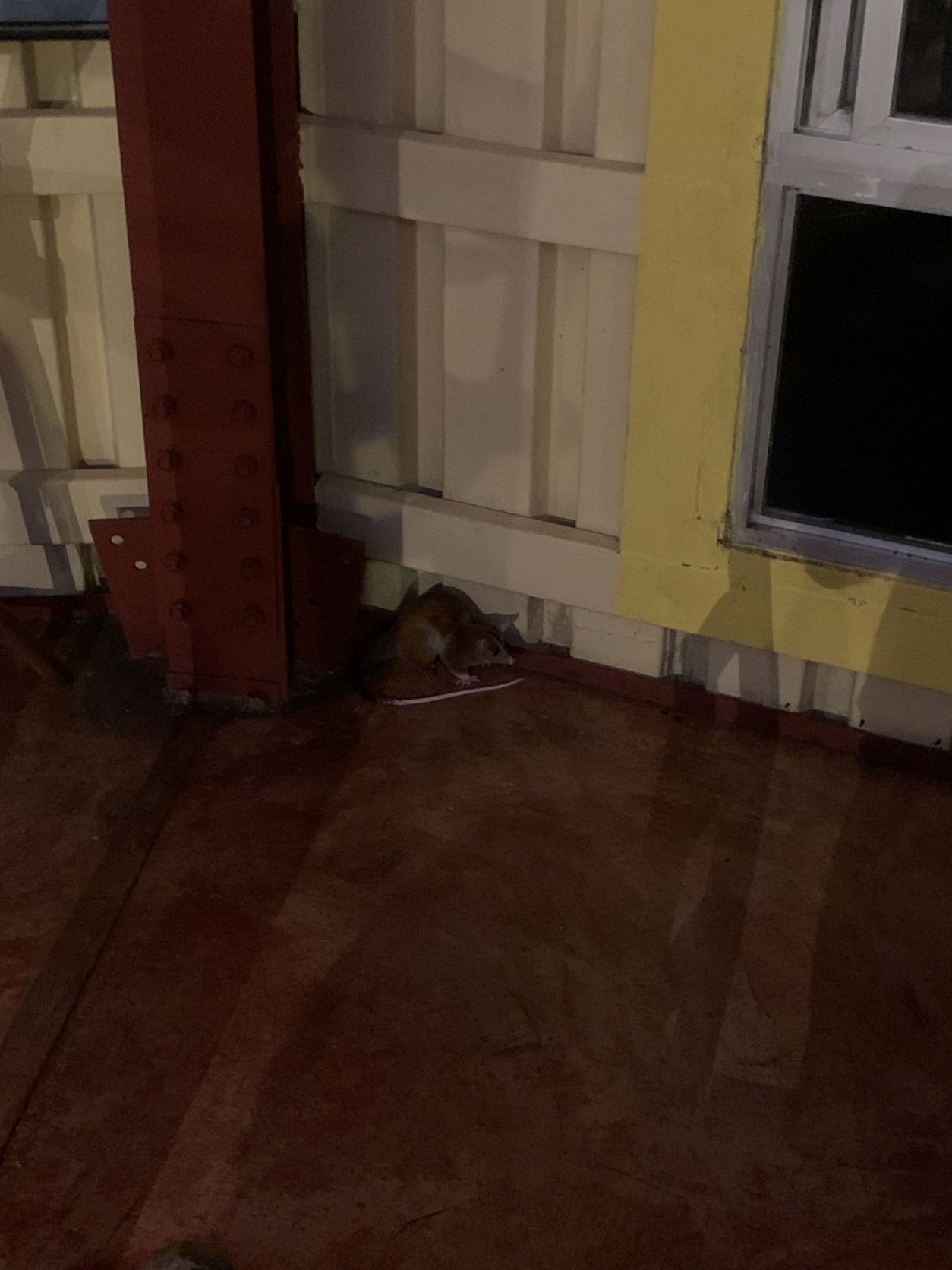
October 8 – 15, 2022
With Aaron Steed
Narrative by Aaron Steed, Photos by Aaron Steed and Joan Baker
We arrived at the Canopy Tower in the afternoon and after getting settled in, we all met at the top to get acquainted with our surroundings and the birds typical around our lodging.
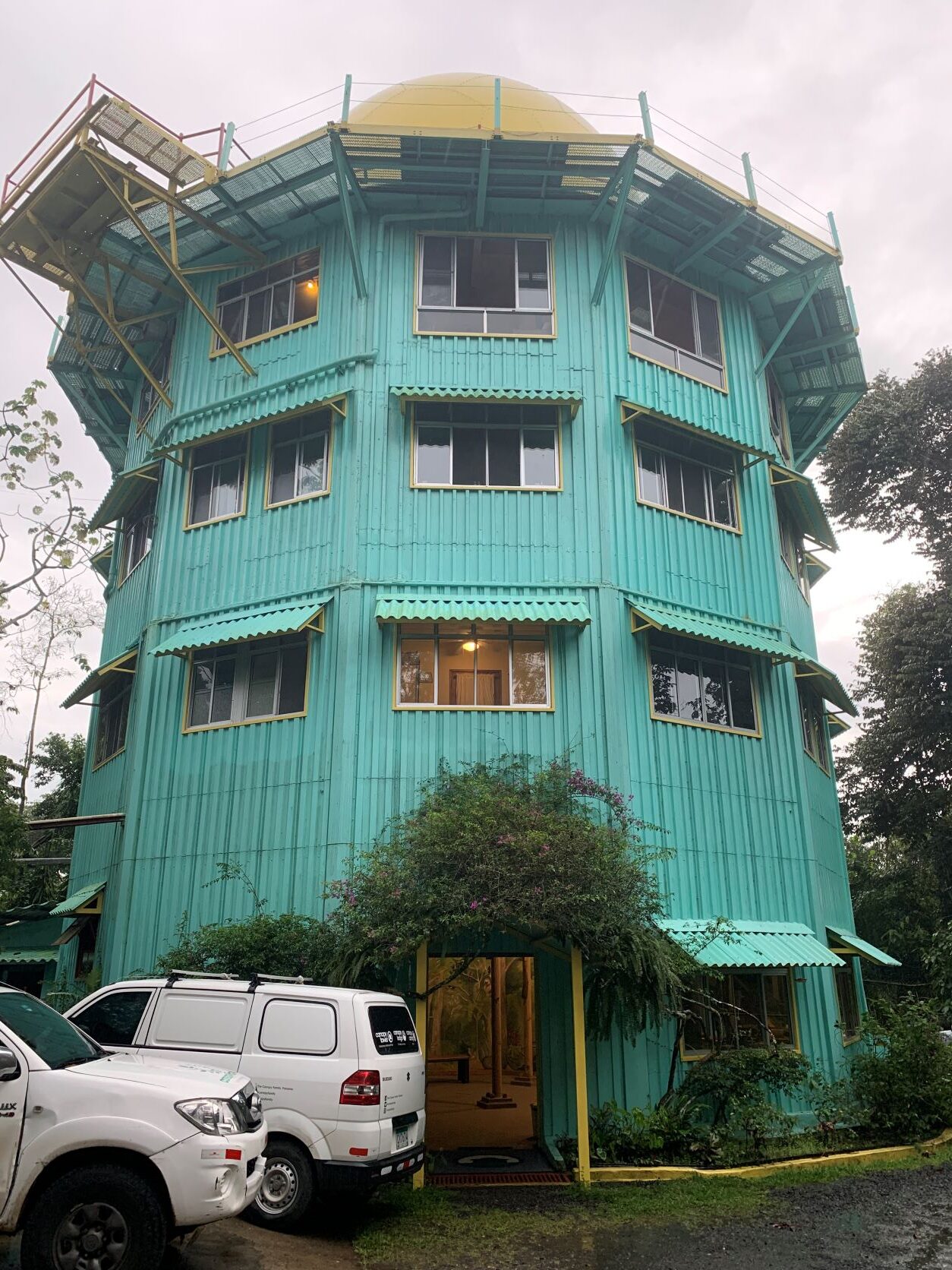

The view from the top, looking out over the rainforests of Soberania National Park to the famed Panama Canal and Centennial Bridge, was indeed a welcome sight after spending most of the day at airports!
It didn’t take us long to find birds either – there was a near-constant flurry of activity concentrated around the fruiting melastoma tree near the Tower’s entrance, and this held many of our group’s first sightings of such beauties as Red–capped & Velvety (formerly called Blue–crowned) Manakins, Plain–colored & Golden–hooded Tanagers, Green Honeycreepers, and Black–cheeked Woodpecker.
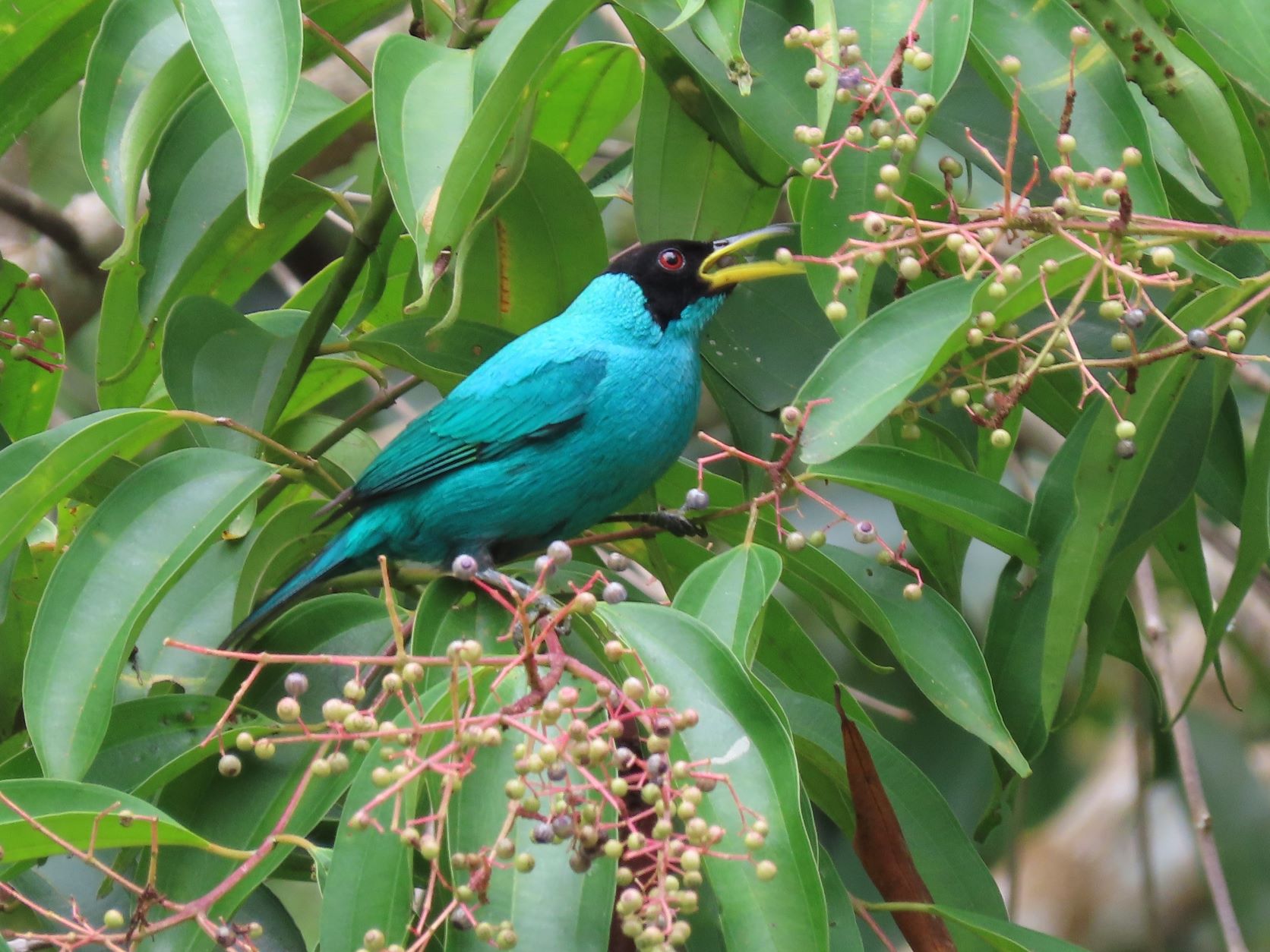
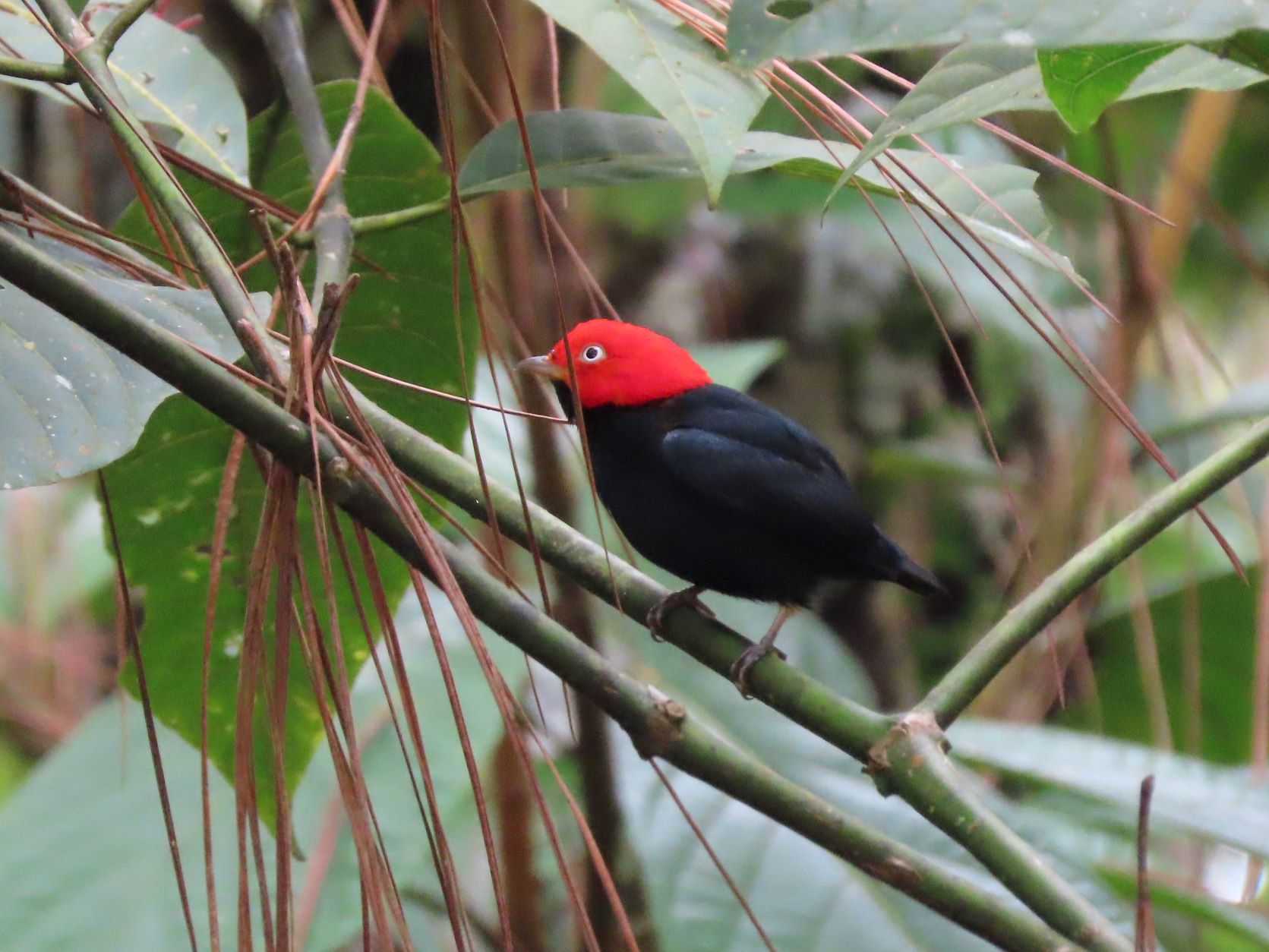
This hubbub further attracted a few familiar neotropical migrants like Gray–cheeked Thrush, Scarlet Tanager, Eastern Wood–Pewee, and Prothonotary, Bay–breasted, and Canada Warblers. Meanwhile, the Tower’s hummingbird feeders were abuzz with Blue–chested Hummingbirds, with Long–billed & Stripe–throated Hermits making brief, occasional appearances. Not a bad start to the trip!
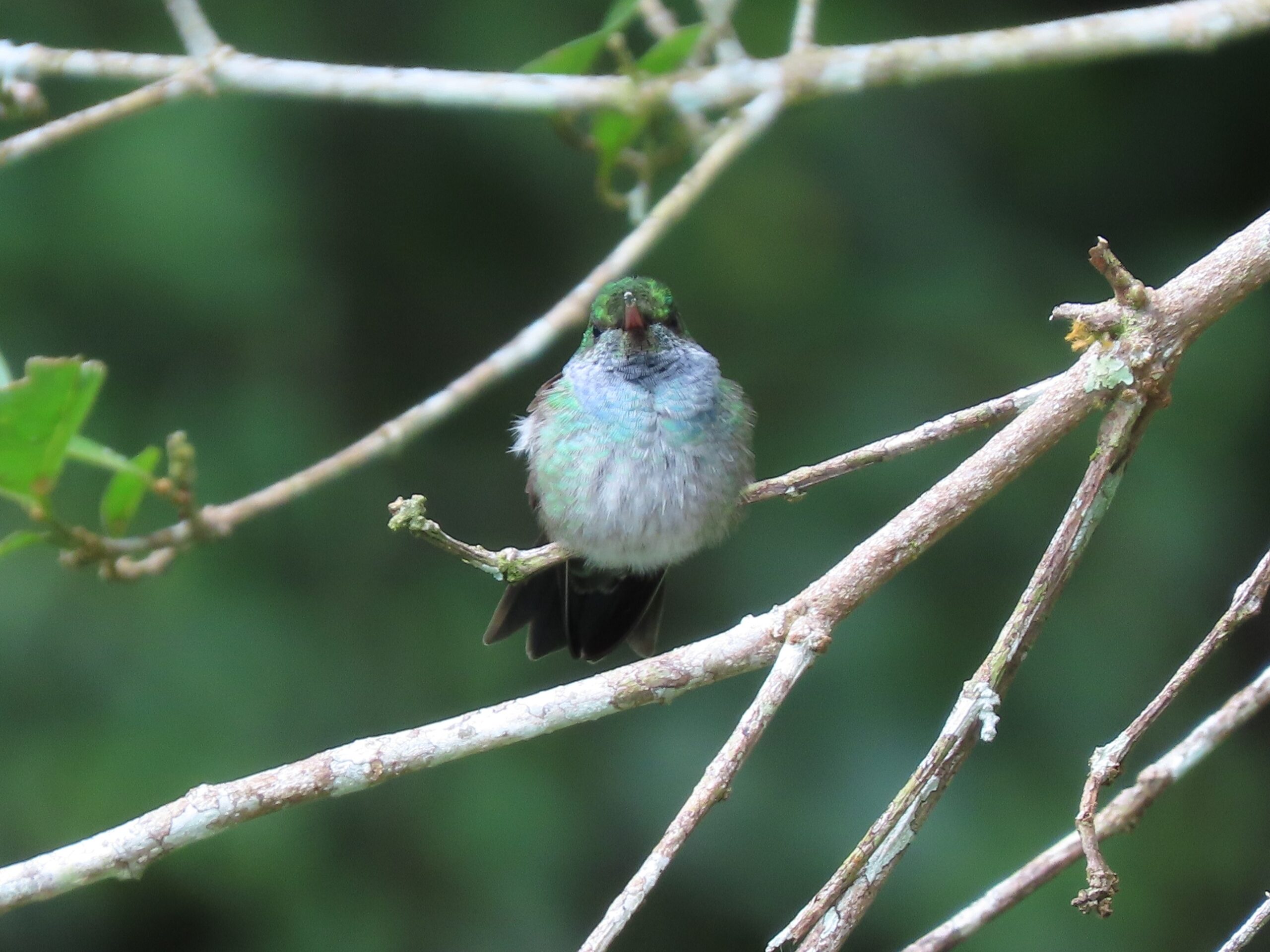
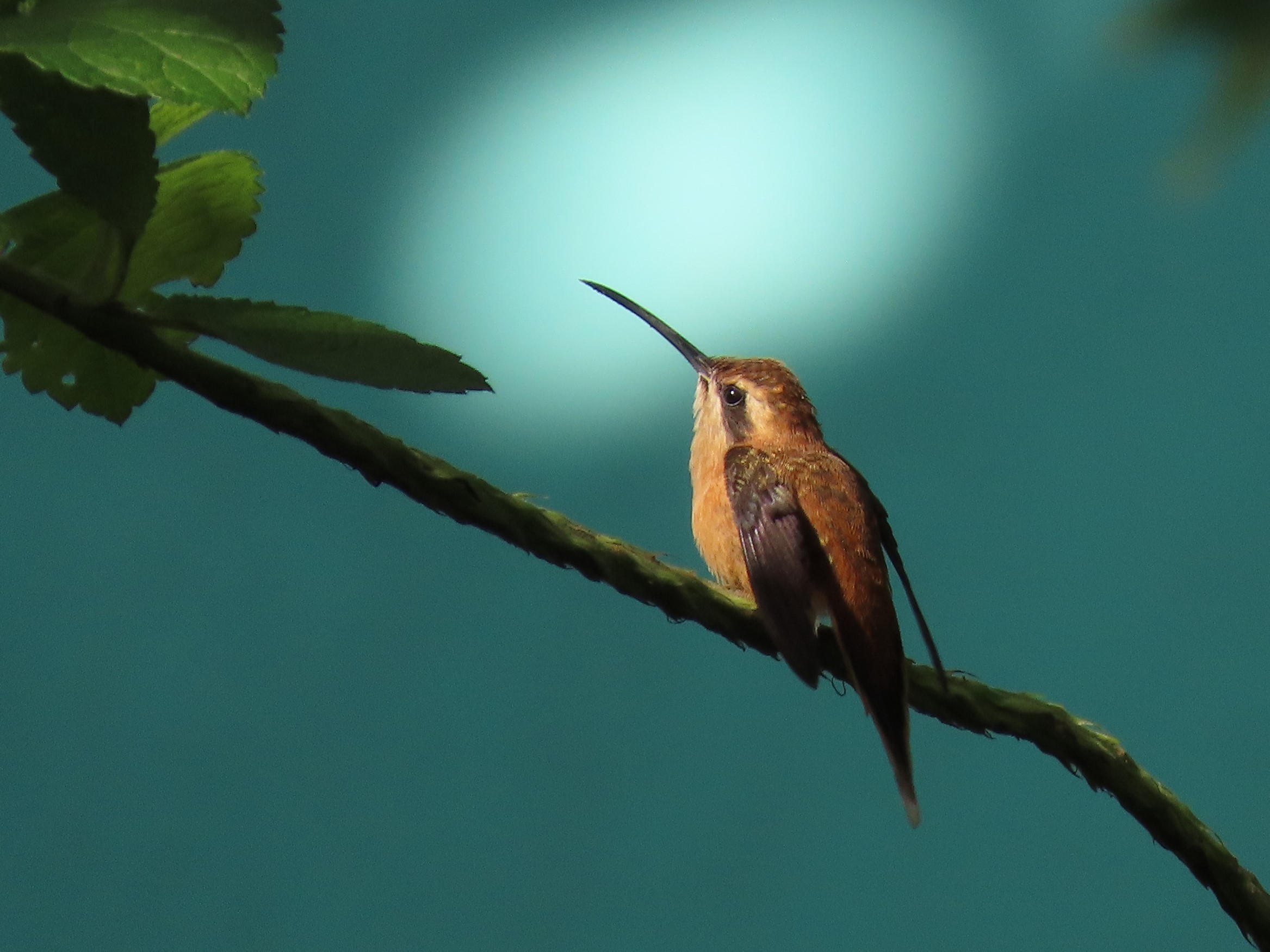
Right out the Tower’s entrance gate, lies Semaphore Hill Road – a paved road which provides guests with easy ground access to the semideciduous rainforest that surrounds the Canopy Tower. Aside from scope views of a beautiful, roosting Black-and-white Owl, our morning walk here started a bit quiet, but before long we found a few feeding flocks. Dot-winged Antwrens, White-shouldered Tanagers, and Black-crowned Antshrikes were quite common and we managed great views as well of Crimson–crested and Cinnamon Woodpeckers, Northern Barred Woodcreeper, Slaty–tailed Trogon, Broad–billed Motmot, the diminutive Golden–crowned Spadebill, and a pair of White–whiskered Puffbirds hawking insects from the vines.

by Joan Baker
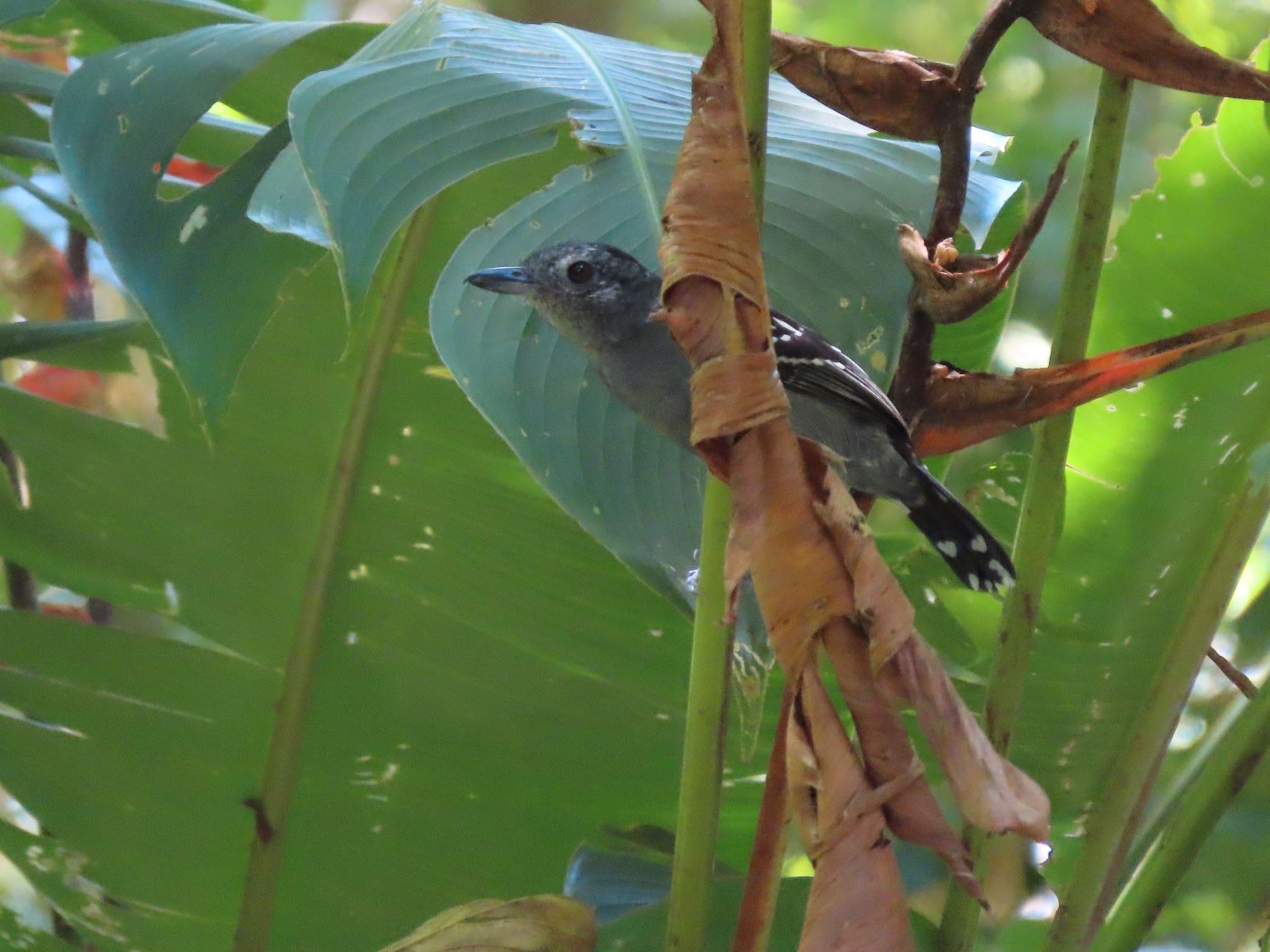
by Joan Baker
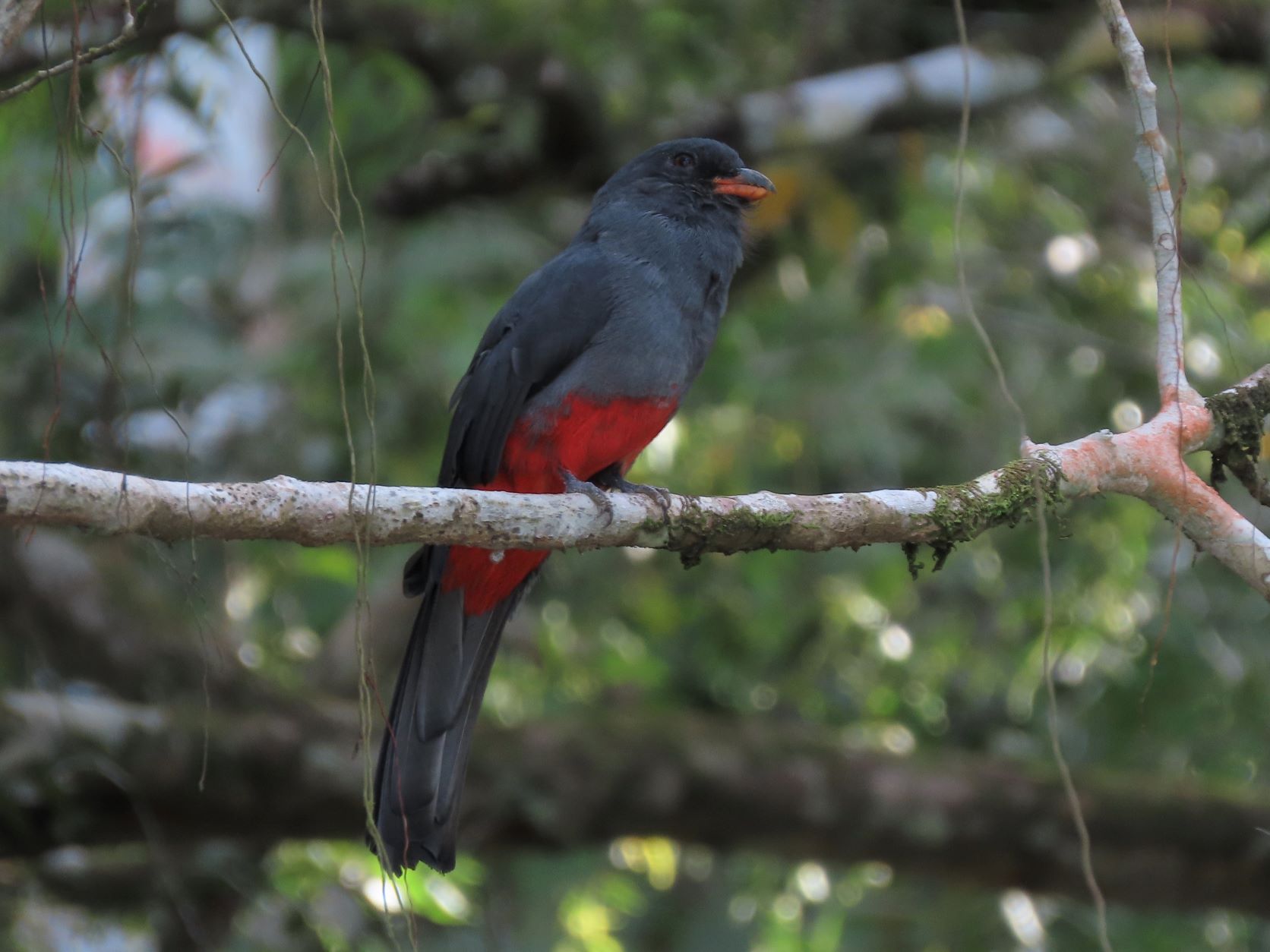
by Joan Baker
To cap off the productive morning, a family of Great Tinamou crossed the road mere feet from us, just before we caught our ride back to the top of the hill (aboard the aptly named ‘El Tinamu’) for lunch.
After lunch & siesta, we made the short drive to Gamboa to visit the Canopy Family’s other nearby property, the Canopy B&B. The feeders here are always a fun stop – as soon as the bananas were out, the birds started coming in! There were Crimson–backed, Blue–gray, and Palm Tanagers, Red–crowned Woodpecker, Buff–throated Saltator, and even Whooping Motmot and Gray–headed Chachalacas. Several Yellow–throated Toucans called throughout the neighborhood and in some of the surrounding trees we found a couple other trip firsts in Panama Flycatcher, Summer Tanager, and Thick–billed Euphonia.
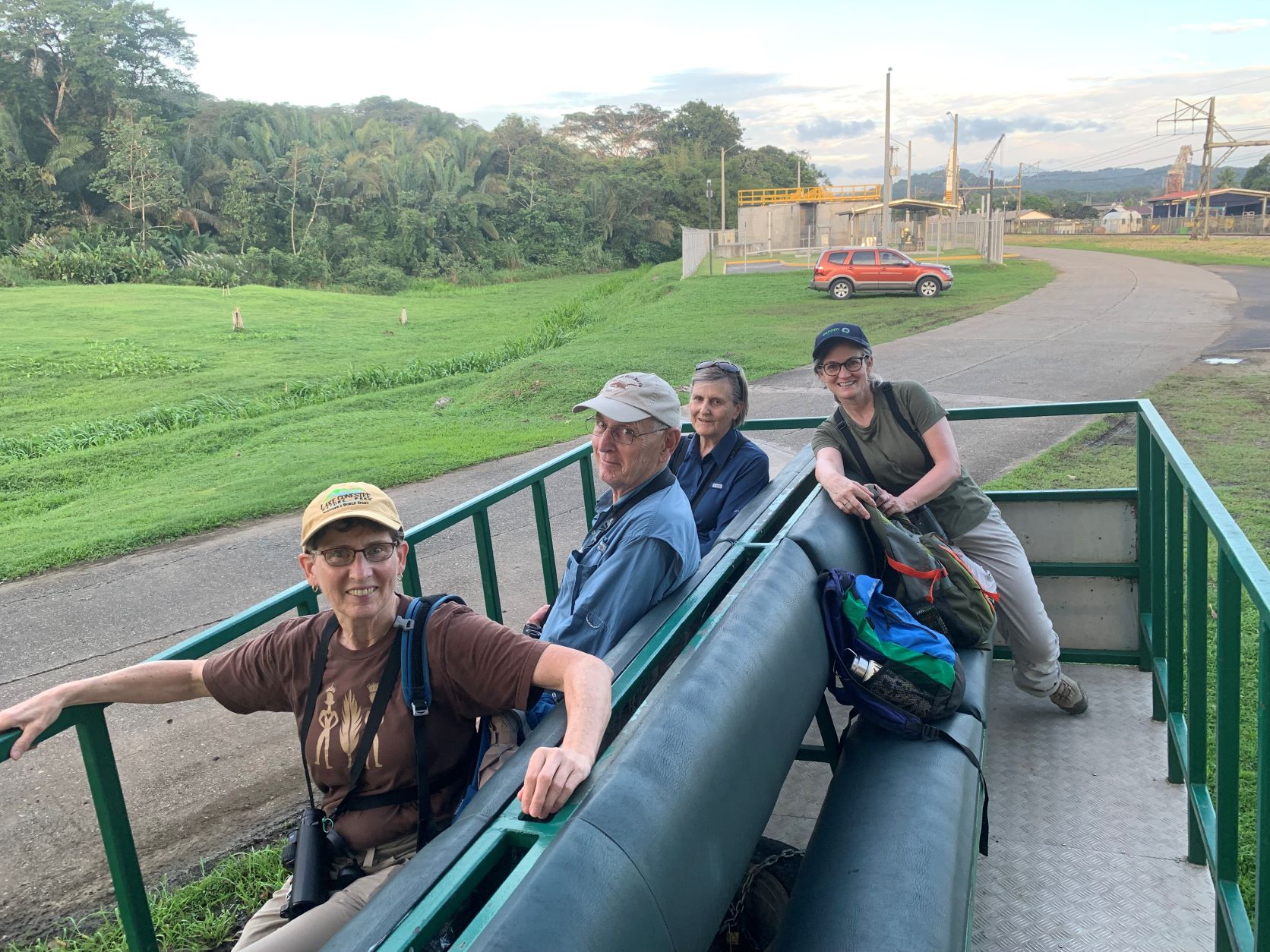
On our way back to the Tower, we made an hour long stop at the Ammo Dump Ponds, a must-do on any trip to the Canal Zone. The open wetlands with scattered trees, located across the road from the Panama Canal, is a great place to look for kingfishers and marsh birds and to compare similar flycatchers. Rusty–margined and Social Flycatchers, and Great and Lesser Kiskadees were all present for our visit. Wattled Jacana and Purple Gallinule stalked through the reeds and we heard the explosive trills of White–throated Crake, which remained hidden in the marsh. The barbed wire running along the top of the fencing enclosing the ‘ammo dump’ can be a bit intimidating and unsightly, but it was made less so by the colorful variety of birds perching there and giving us great views – stunning Yellow–tailed Orioles, Yellow Warblers, and a pair of Barred Antshrikes, among others. We found three species of seedeater feeding here on the lawn – Variable, Yellow–bellied, and Ruddy–breasted and at one point, they were joined by a small flock of Dickcissels. We also had our first taste of raptor migration, with an estimated 4,000 Turkey Vultures and 2,500 Broad–winged Hawks streaming over our head in the span of about 15-20 minutes!
The following morning found us at the famous Pipeline Road, considered to be one of the birdiest places in Central America.

Our visit certainly did not disappoint, managing 75 species for the morning in a mere 2-mile stretch of road. A few Crane Hawks circled overhead just above the canopy, greeting us as we stepped from the vehicle. We had scope views of a roosting Great Potoo, a study in camouflage. A Black-striped Woodcreeper flew from trunk to trunk, and before we knew it, we were in the midst of another feeding flock. Checker-throated Stipplethroats and White-flanked Antwrens worked the tangles of vines while Ruddy-tailed Flycatcher sallied insects from the roadside. A beautiful pair of Spotted Antbirds joined with Red-throated Ant-Tanagers and Gray-headed Tanagers in the undergrowth, and a pair of Song Wrens softly sang while constructing a nest. We also had the trip’s first Purple-throated Fruitcrows including several stunning males, incredible looks at Streak-chested Antpitta, and a rather cooperative Speckled Mourner, a rare bird which tried its best to steal our attention away from the antpitta.
That afternoon we visited the Gamboa Rainforest Resort on the banks of the Rio Chagres, the main tributary of the Panama Canal.
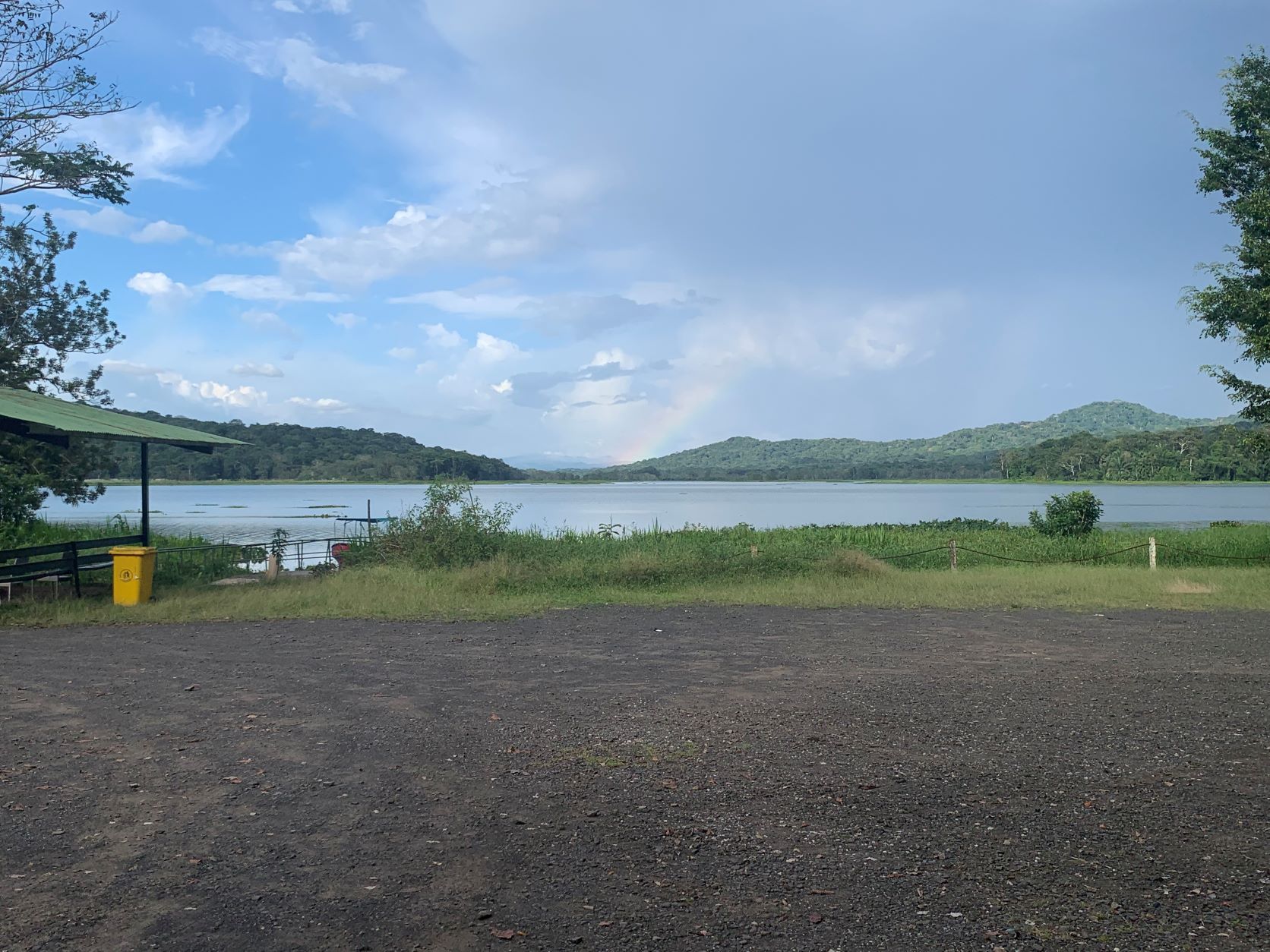
The river was quite wide, almost lake-like at our first stop. On the open expanse of water we found a few flocks of winter-plumaged Blue-winged Teal, and in the distance flew our first Snail Kite of the trip. A good pick up here was a Cocoi Heron, a mostly South American species uncommon this far west, its white neck just visible jutting out of the reeds on the far side of the river. Boat-billed Flycatchers and Eastern Kingbirds perched in the treetops while Southern Lapwings and Clay-colored Thrushes foraged across the lawns. A short walk down the paved road here past yards and gardens got us fantastic views of a stunning male Violet-bellied Hummingbird plus Cinnamon Becard, Flame-rumped Tanager, Thick-billed Seed-Finch, and Southern Beardless-Tyrannulet. Prolonged scope views of a beautiful Rosy Thrush-Tanager singing in the thicket was the icing on the cake!
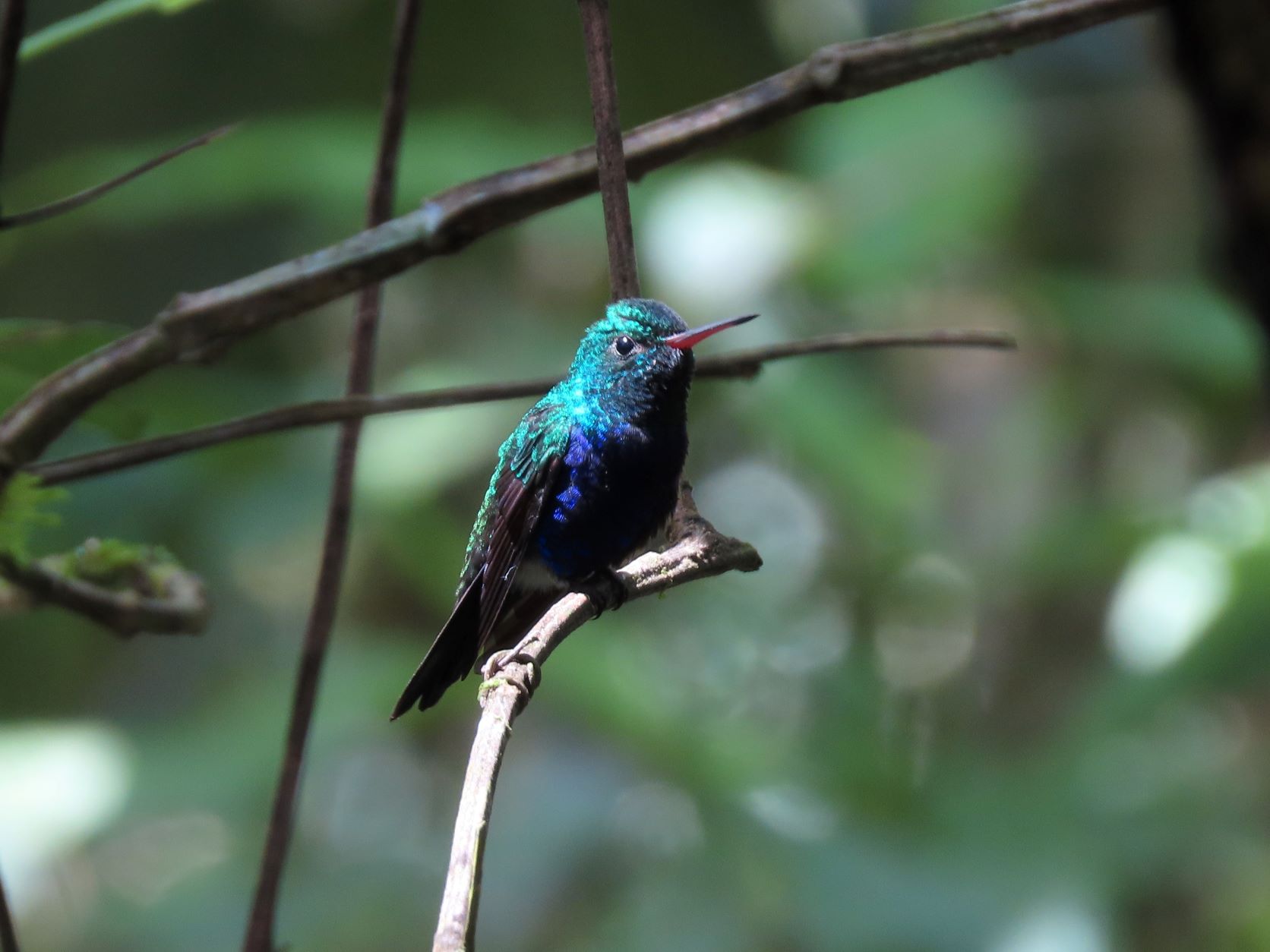
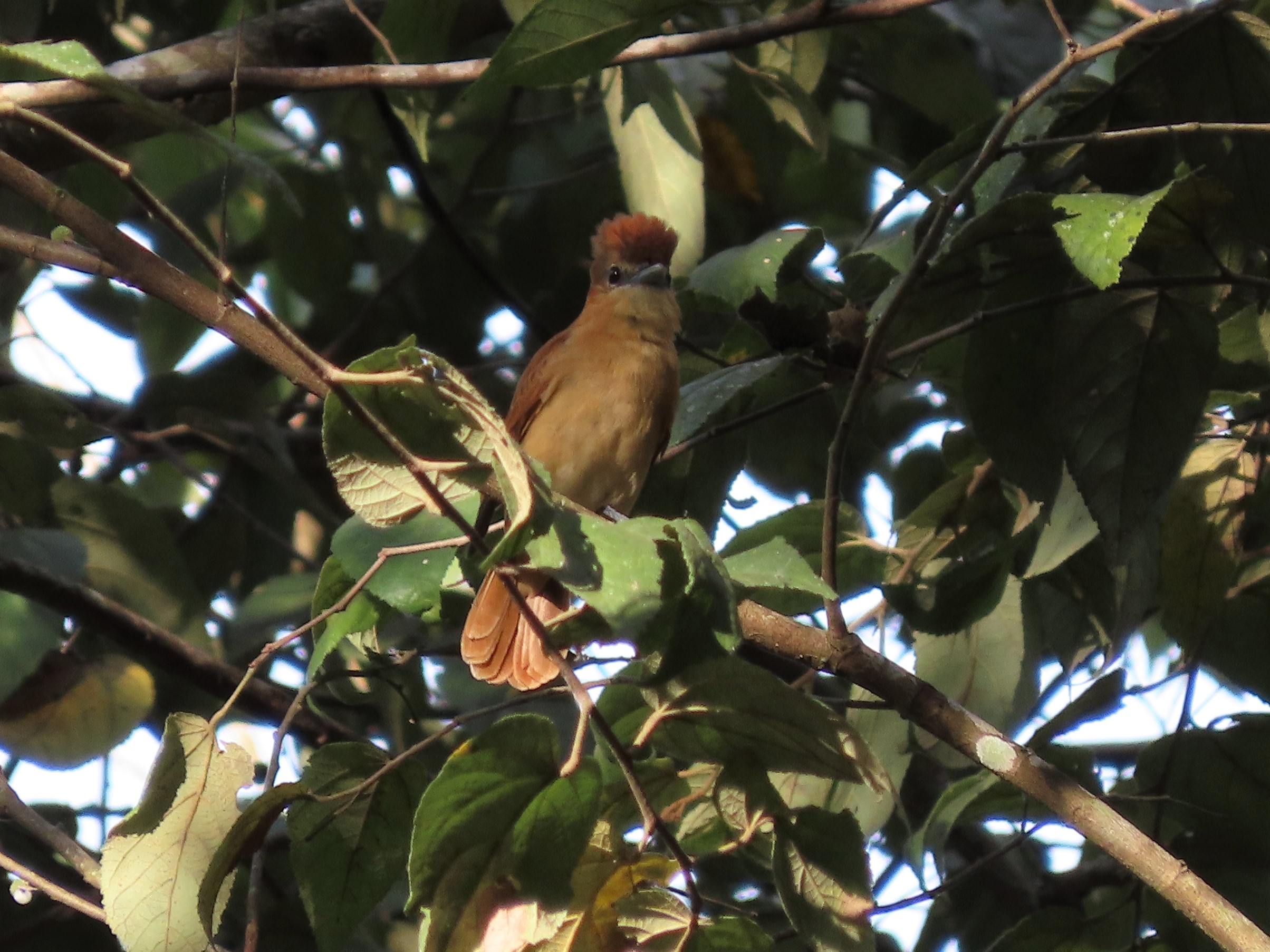
We spent our next morning at ‘Metro Park’ in Panama City, the only large, forested park within a metropolitan capital in Latin America. The park contains a good example of dry lowland pacific forest and is an excellent place to find a number of dry forest specialty birds. Rufous-breasted Wrens seemed to be everywhere and after some trying, we at last got great looks at them in the vines. We took our time birding our way uphill to the ‘mirador,’ and along the way came across several flocks which contained quite a few new birds for us.
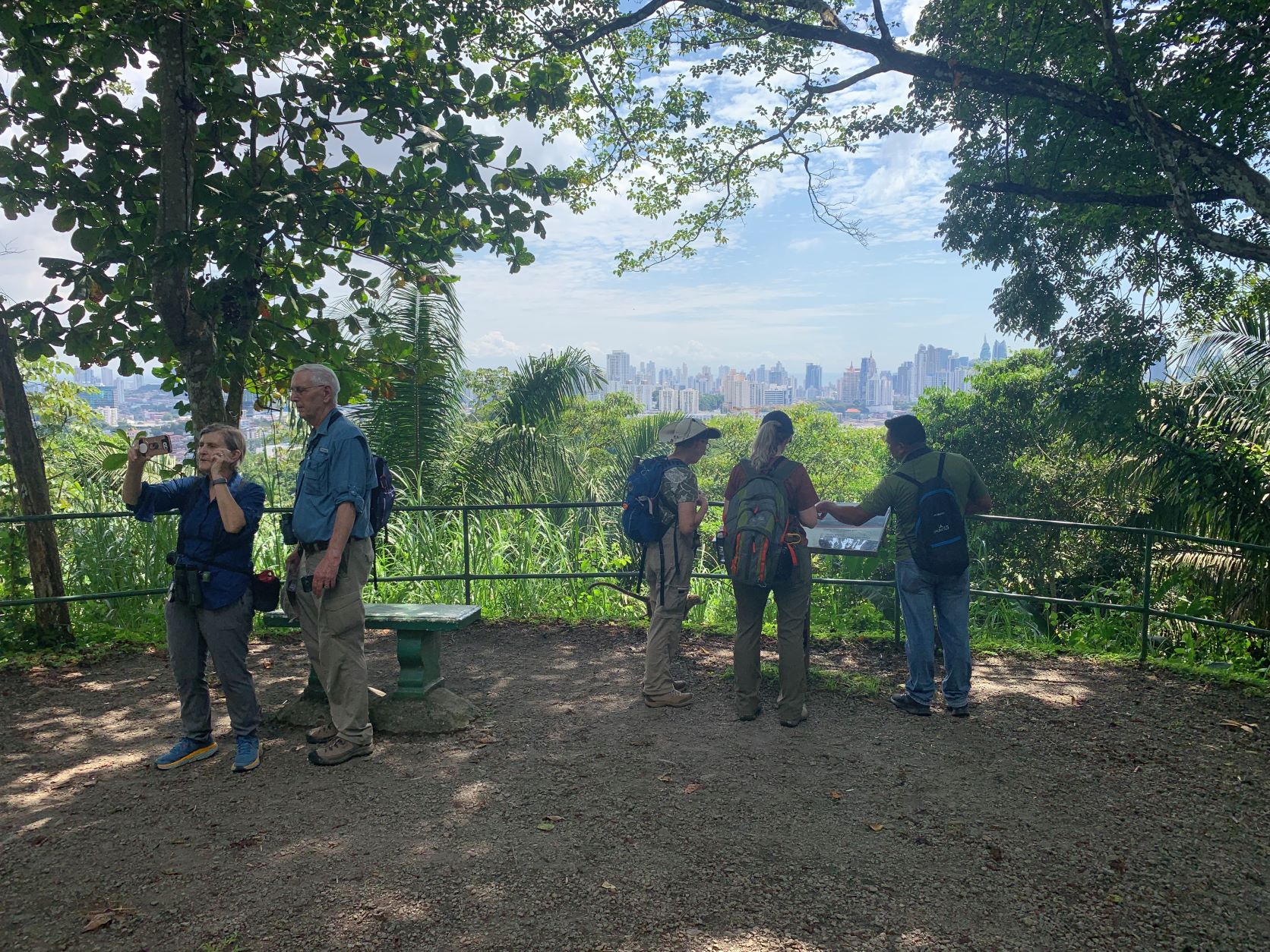
There were numerous Golden-fronted Greenlets and Dusky Antbirds, and we got awesome views of several Green Shrike-Vireos. The stunning Lance-tailed Manakins, one of our main targets of the day, took some effort but we eventually got satisfying looks (first of a female, then a young male, then at last an adult male). Pale-eyed Pygmy-Tyrant, Orange-billed Sparrow, White–vented Plumeleteer, and a close encounter with a band of about 25 tame, White-nosed Coatis rounded off our morning! Little did we know it, a gorgeous male Blue Cotinga awaited our return to the tower, posing nicely for good scope views right as we stepped from the vehicle!
An afternoon walk at Summit Botantical Gardens & Park was good for some low-hanging fruit we’d so far missed or failed to see well, like Red-lored Parrot, Orange-chinned Parakeet, Olivaceous Woodcreeper, Chestnut-headed Oropendola, and Yellow-rumped Cacique.

A late Piratic Flycatcher was a bit of a surprise. An added treat here was viewing the Harpy Eagle enclosure. Even though it wasn’t countable on our trip list, the eagle, a majestic female, would occasionally and quite impressively swoop along the perimeter, giving a high-pitched screech when she returned to her favorite perch.

No trip to the tropics is complete without some sort of night outing and this evening we enjoyed a night drive in one of the Tower’s field vehicles. Guests at the Canopy Tower often see Night Monkey, Kinkajou, and Woolly and Common Opossums in the treetops right around the Tower (sometimes from, and even inside, the dining room!), but a night drive down Semaphore Hill Road or to Plantation Road increases one’s chances of encountering yet more nocturnal wildlife. Our night drive went as most night drives go – we heard more than we saw, but it was fun just to be out! We saw Great Potoo hunting from a snag above the road and heard Crested, Spectacled, and Mottled Owls. A few of the group also heard a very distant Choco Screech Owl. We had fleeting glimpses of an armadillo, views of both Three-toed Sloth and Hoffman’s Two-toed Sloth, plus roosting Great Tinamou and Slaty-tailed Trogon. A few stops along the main road were ultimately unsuccessful in finding Common Potoo, but a chorus of frogs unexpectedly and hilariously responding to the Potoo tape from their small puddle was entertainment enough!

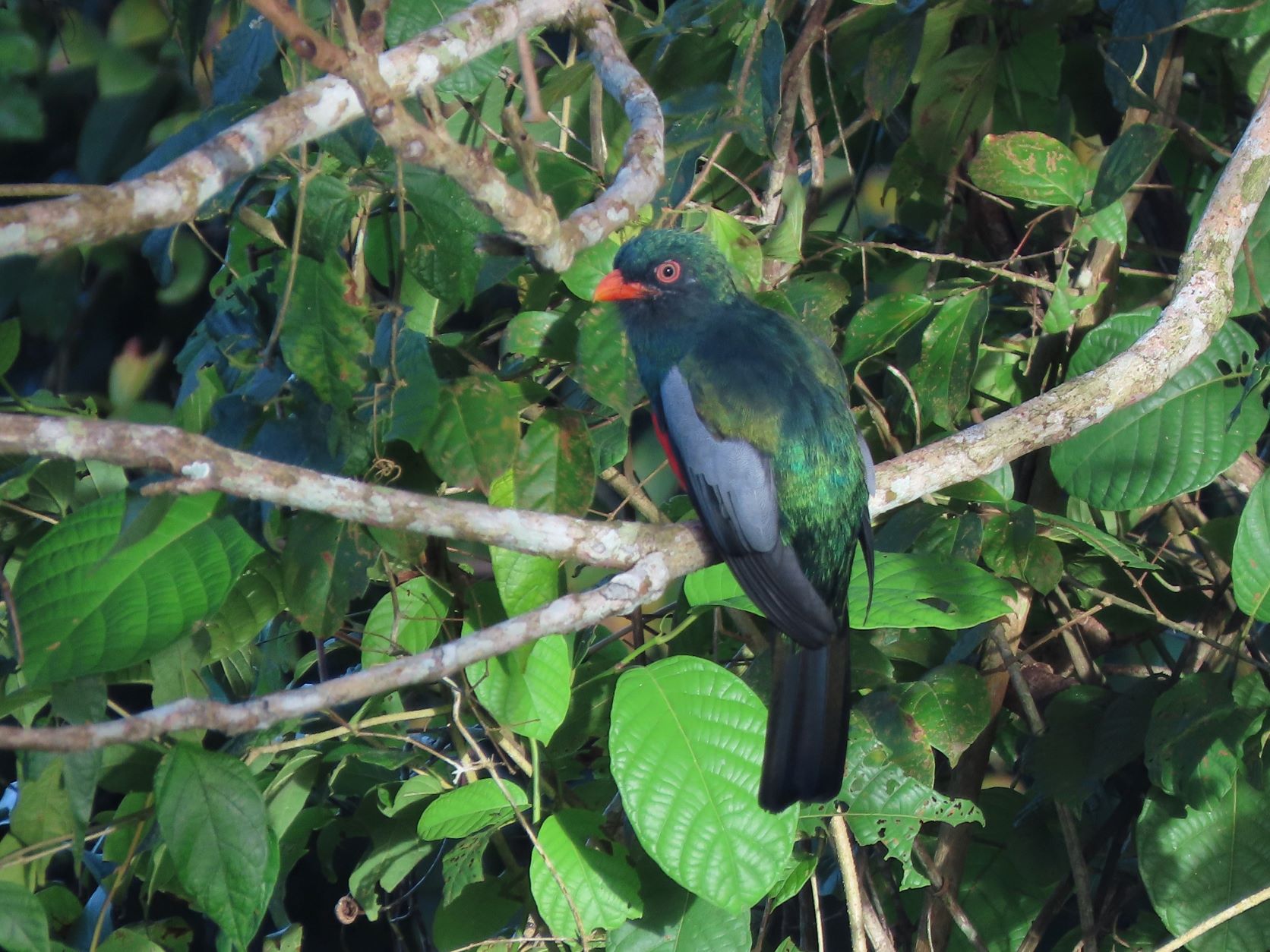
Our next morning began at the observation tower of the Panama Rainforest Discovery Center.
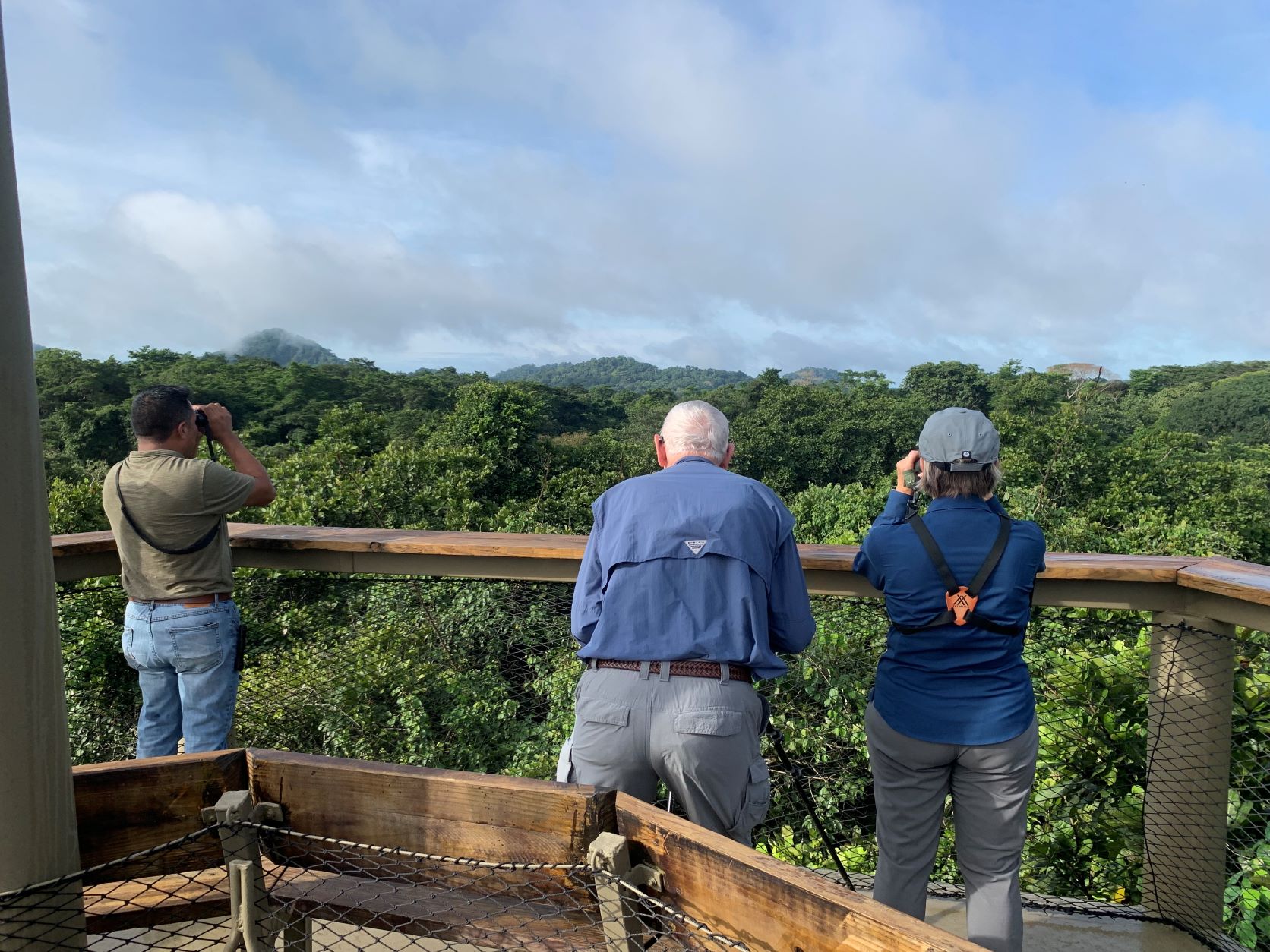
While the morning started a bit slow we still had great views of White-tailed Trogon, Black-breasted Puffbird, Peregrine Falcon, and Mistletoe Tyrannulet up in the canopy. We managed to find a very distant White Hawk (a white spot on a far hillside), and heard-only Collared Forest–Falcon, Bright-rumped Attila, and Choco (formerly Gray) Elaenia before deciding to head down and explore some of the trails. On the short walk to Calamito Lake we found a few Chestnut-backed Antbirds along the way, and got close views of Russet-winged Schiffornis. At the lake we added Alder Flycatcher, King Vulture, Mangrove Swallow, while a quick stop at the center’s feeders turned up Crowned Woodnymph, White-necked Jacobin, Golden-collared Manakin, and Pied Puffbird.
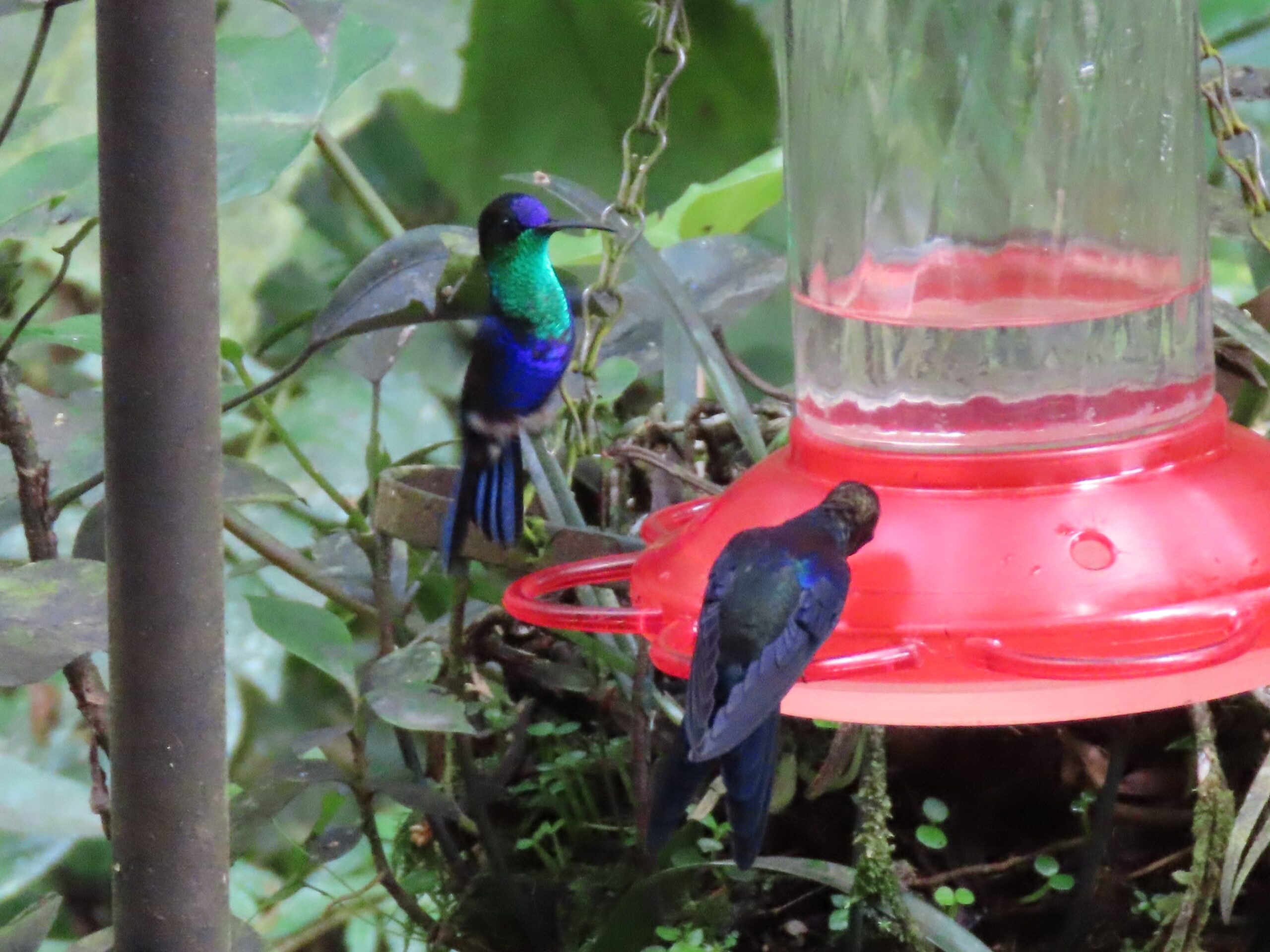

That afternoon we got a stark reminder of why we were visiting at this time of year. Our local guide interrupted our siesta to inform us that there were ‘hundreds of thousands of raptors’ currently soaring over the tower. Word spread and we all hastened to the top of the tower, where we were met with a breathtaking spectacle – there were raptors absolutely everywhere, all around us!
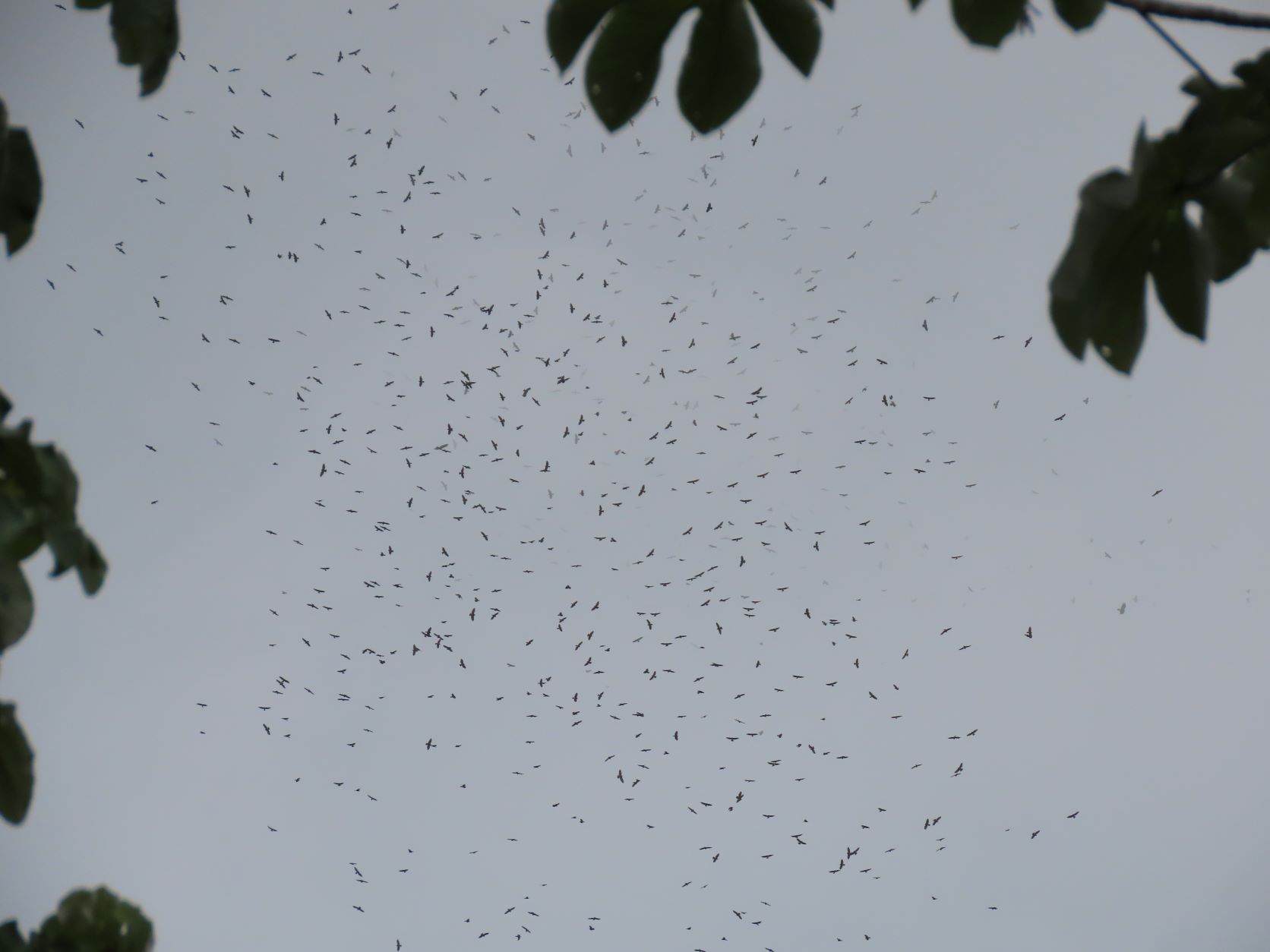
Area thunderstorms had forced the birds low, creating a dizzying concentration right above our heads – there were birds covering nearly every patch of sky, in every direction. There were massive kettles of both Broad-winged Hawk and Turkey Vulture, some swirling upward into the clouds, while countless others streamed through in the ‘rivers of raptors’ that many of us had only ever read about. After about 30 minutes of breathless viewing, the storms well and truly descended, and the birds dropped into the trees to take cover as we headed back into the tower. Our best estimate for the spectacle was 150,000+ Broad-winged Hawks – truly awe-inspiring!
Our afternoon outing was delayed with the hope of avoiding the rain, but we did end up getting rained on a little – not that any of us really minded after witnessing what we’d seen earlier this afternoon!

Despite the rain, our visit to Summit Ponds and Old Gamboa Road was still worth the trip. We picked up both Amazon and American Pygmy Kingfishers, an actual, wild (non-domestic) Muscovy Duck, the unique Boat–billed Heron, and a roosting Spectacled Owl. A Bat Falcon posing on the nearby water tower was an added treat!
An early departure the following morning saw us making our way to the cool foothills and cloud forests of Cerro Azul & Cerro Jefe, where a whole new suite of birds awaited. A 5-min bathroom stop turned up our first Black-striped Sparrow, Streaked Saltator, and Yellow-faced Grassquit. The endemic Stripe–cheeked Woodpecker was high on our needs list and we were pleasantly surprised when we heard one calling right as we left the van. A minute later we had stunning scope views of a beautiful male!

Walking along the road through the community here further turned up Brown-hooded and Blue-headed Parrots, Purple-crowned Fairy, Violet–headed Hummingbird, Scale-crested Pygmy-Tyrant, Rufous-and-white Wren, and White-ruffed Manakin. A rare Black-and-white Hawk-Eagle soaring over the hills was an awesome surprise, and we had excellent views of the near-endemic Violet-capped Hummingbird. Before lunch we were treated to another great raptor show – not quite as good as the day prior but still very impressive, with a bit more diversity thrown in with Mississippi, Swainson’s and Short-tailed Hawks all making appearances in the hordes of Broad-winged Hawks & Turkey Vultures. We had our lunch on the back porch of a private residence, where an impressive array of feeders hosted a flurry of hummingbirds, honeycreepers, tanagers and more. We found Green Hermit, Snowy-bellied Hummingbird, Bronze–tailed Plumeleteer, Shining & Red-legged Honeycreepers, Bay-headed Tanager and a small group of Baltimore Orioles.

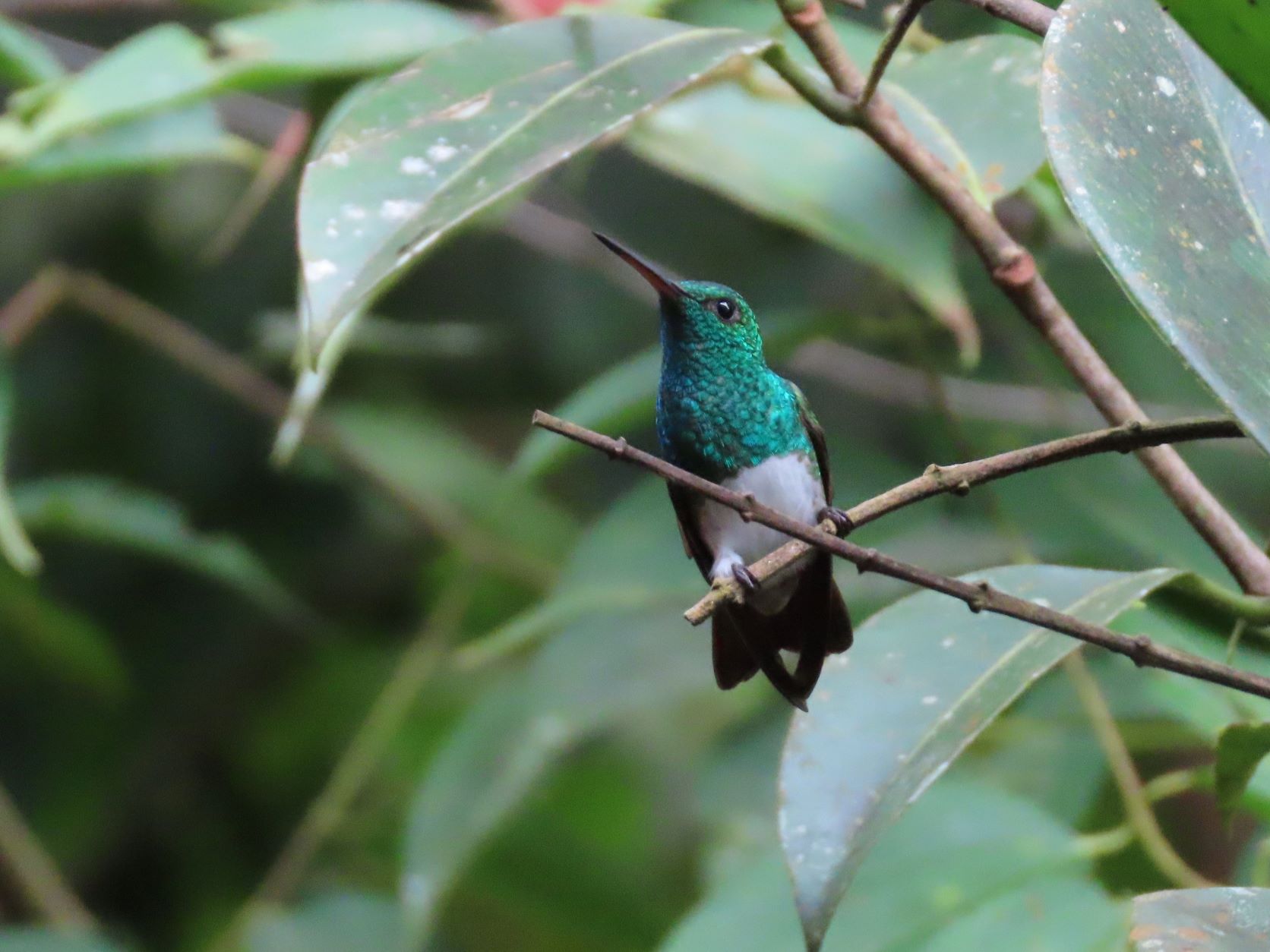
A quick stop at the rocky stream on the drive out produced Black Phoebe and Buff–rumped Warbler. On our way back to the Tower, we made our final stop of the day at Costa del Oeste to get our coastal bird fix. The mudflats and beach were chocked full of birds including Black-necked Stilt, Whimbrel, Marbled Godwit, Western Sandpiper, Short–billed Dowitcher, plus other things like Gull–billed Tern, Black–crowned Night–Heron, and White Ibis. A beautiful ‘Mangrove’ Yellow Warbler (potential candidate for future split) showed well also.
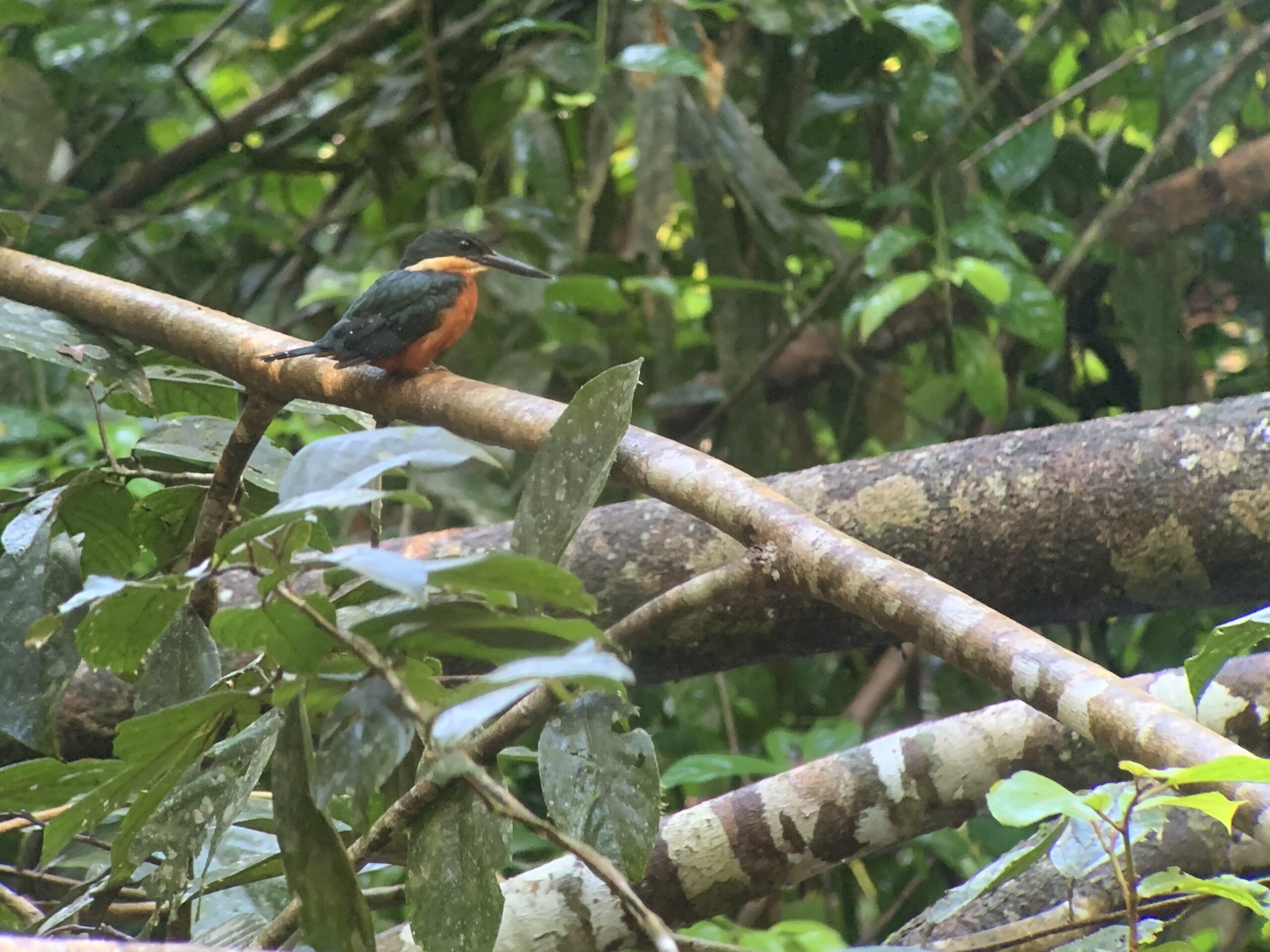
Our last full day started back at Pipeline Road, on a different section than what we’d done previously. Our good luck with rare birds continued today and not only did we get more good looks of the rare Speckled Mourner, but we also had a Green–and-rufous Kingfisher at Juan Grande Creek, and great views of Sunbittern in the creek farther up the road.
We finally got looks at Black-tailed Trogon after having only previously heard them, and added White-necked Puffbird, Great Jacamar, Spot-crowned Antvireo, Moustached Antwren, Black-capped Pygmy-Tyrant, and Sulphur-bellied Flycatcher. Our group opted to skip seeing the Miraflores locks today so we instead enjoyed a very leisurely afternoon at the tower. Our afternoon departures allowed for one final laid-back morning at the tower. The same fruiting melastoma tree which had provided us with many of our first trip birds was still, one week on, chocked full of birds. We got more good looks at Blue Dacnis, Golden-hooded Tanager, Scaled Pigeon, Mealy Parrot and many other birds we’d grown accustomed to.

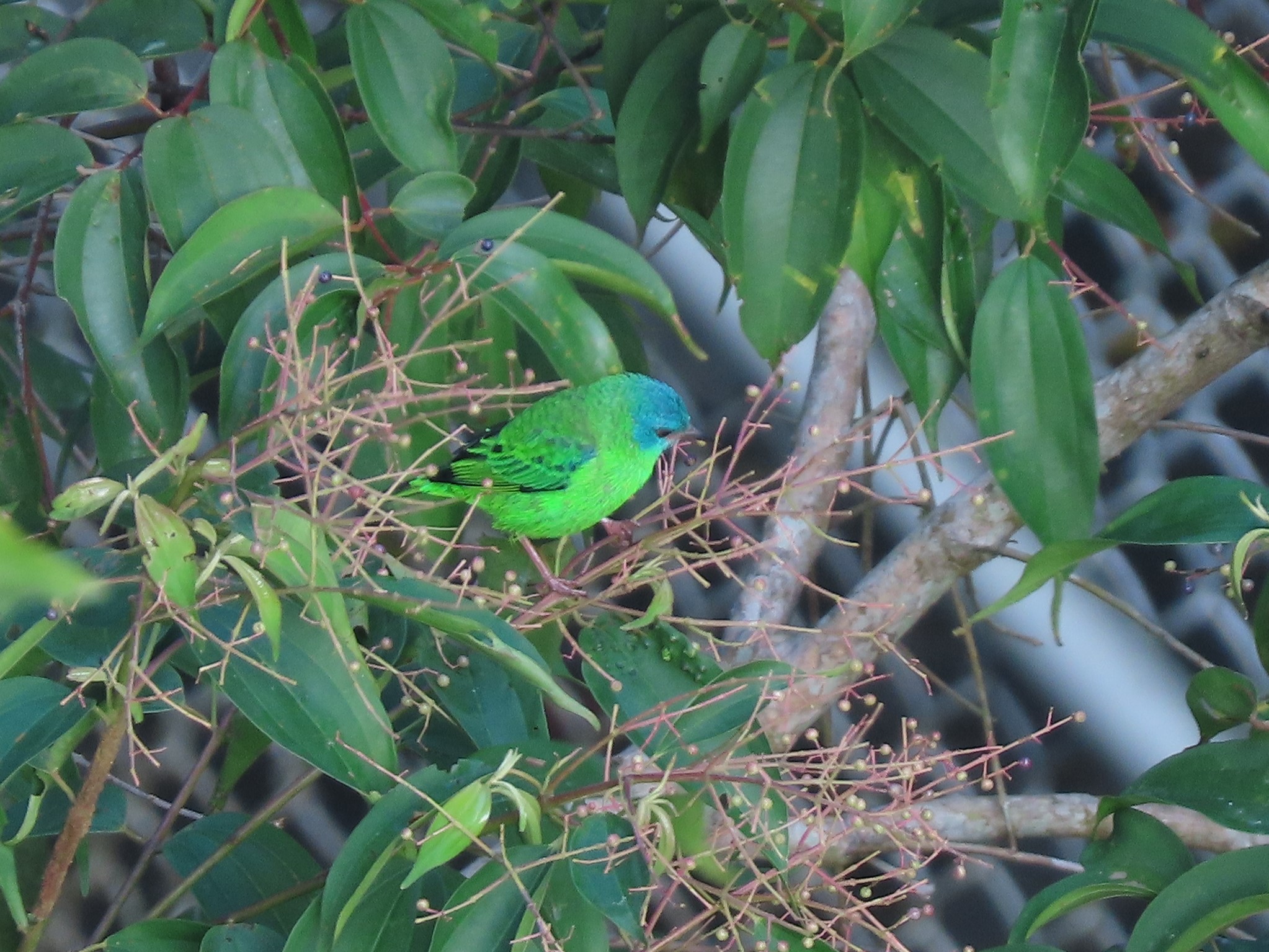
We even managed to find another couple trip birds when we least expected it – first a pair of Hook-billed Kites and then a Merlin! Even as we pulled up to the airport, we couldn’t help spotting a Saffron Finch and Fork-tailed Flycatcher perched side by side on a fence.
What an amazing week it was! We finish our trip with a total of 277 species of birds, 20 mammal species, and memories of an impressive raptor migration that will last a lifetime. We can’t wait to run this trip again!
Aaron Steed
A few more photos…

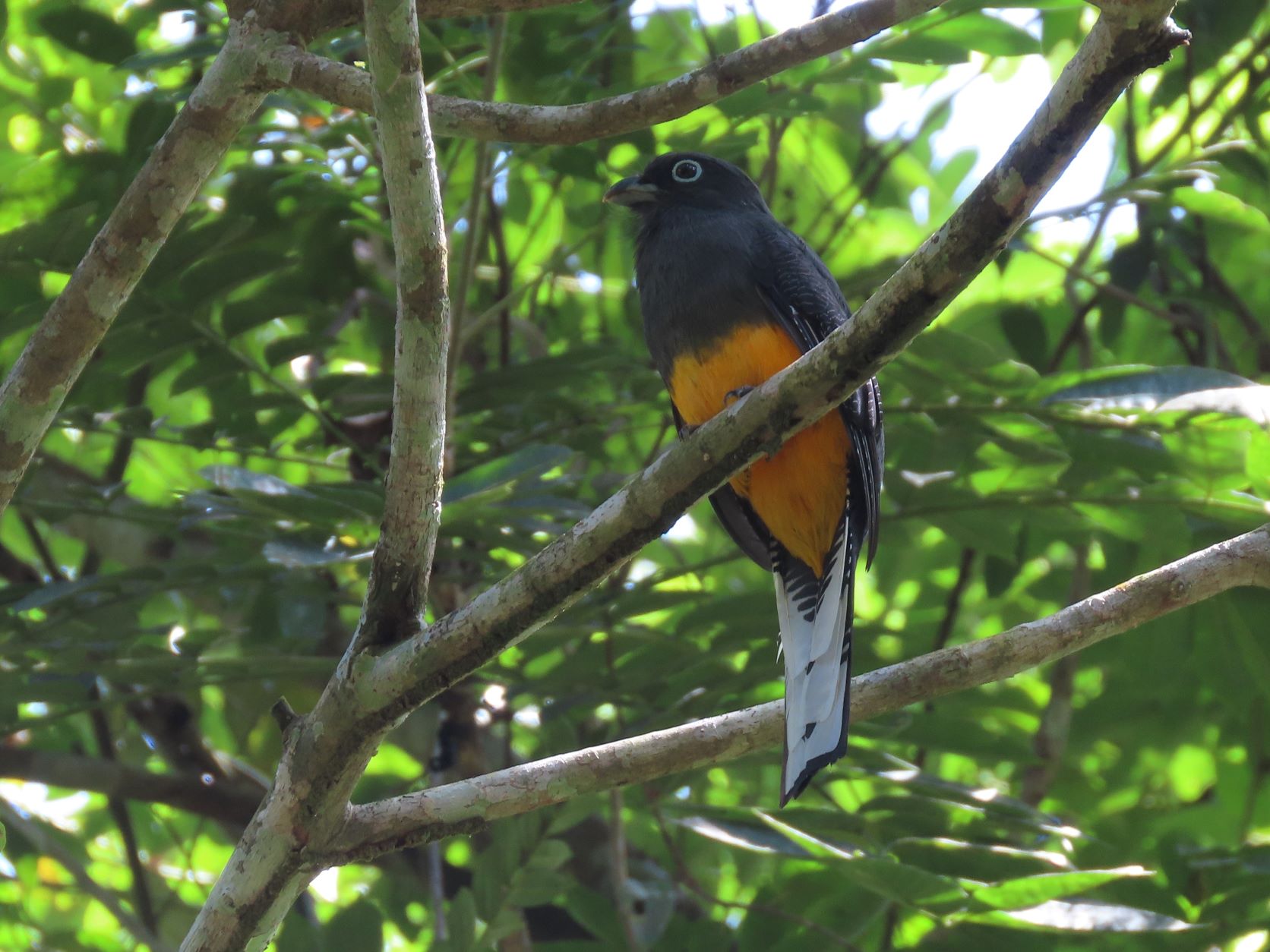
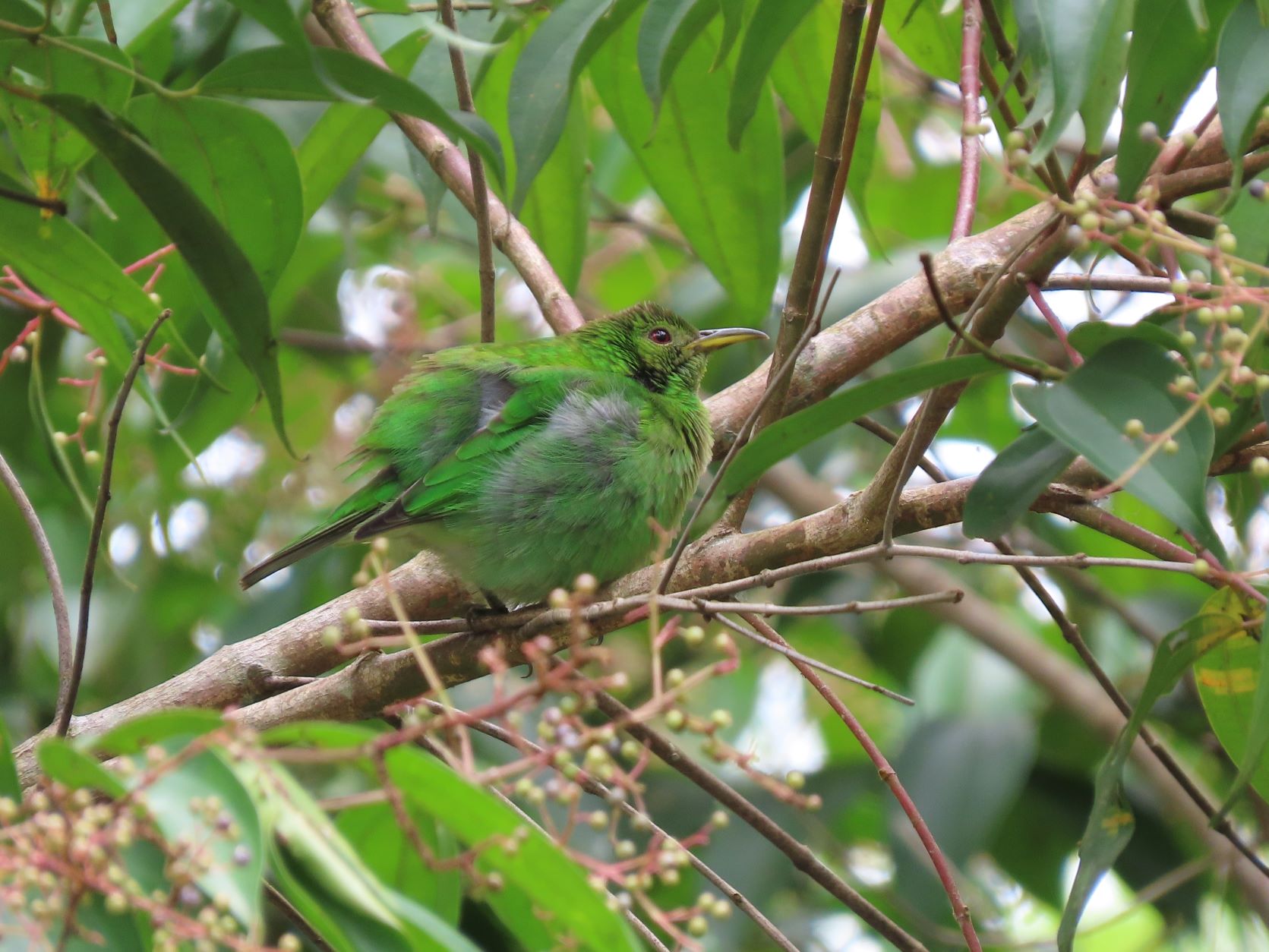
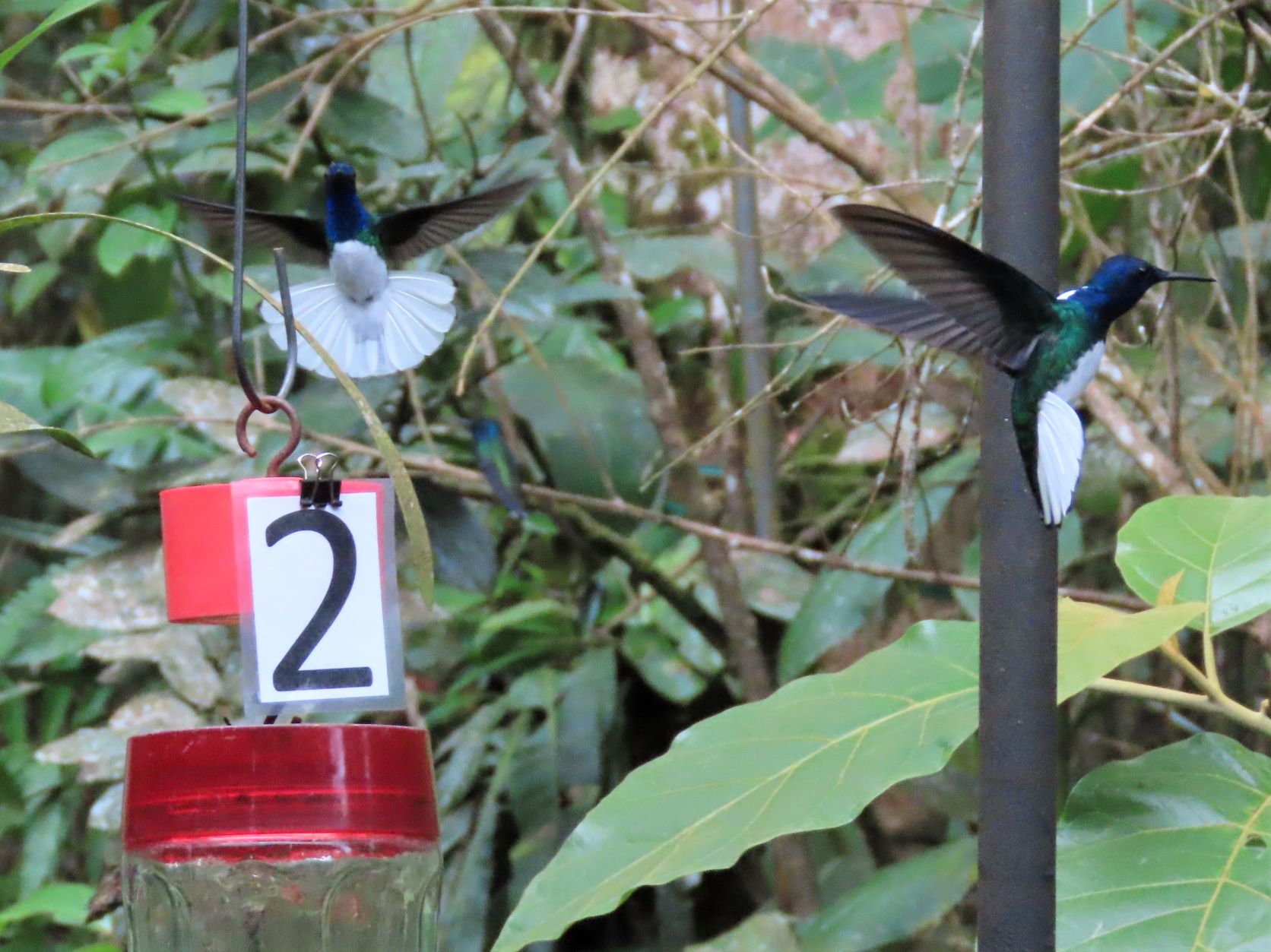
by Joan Baker
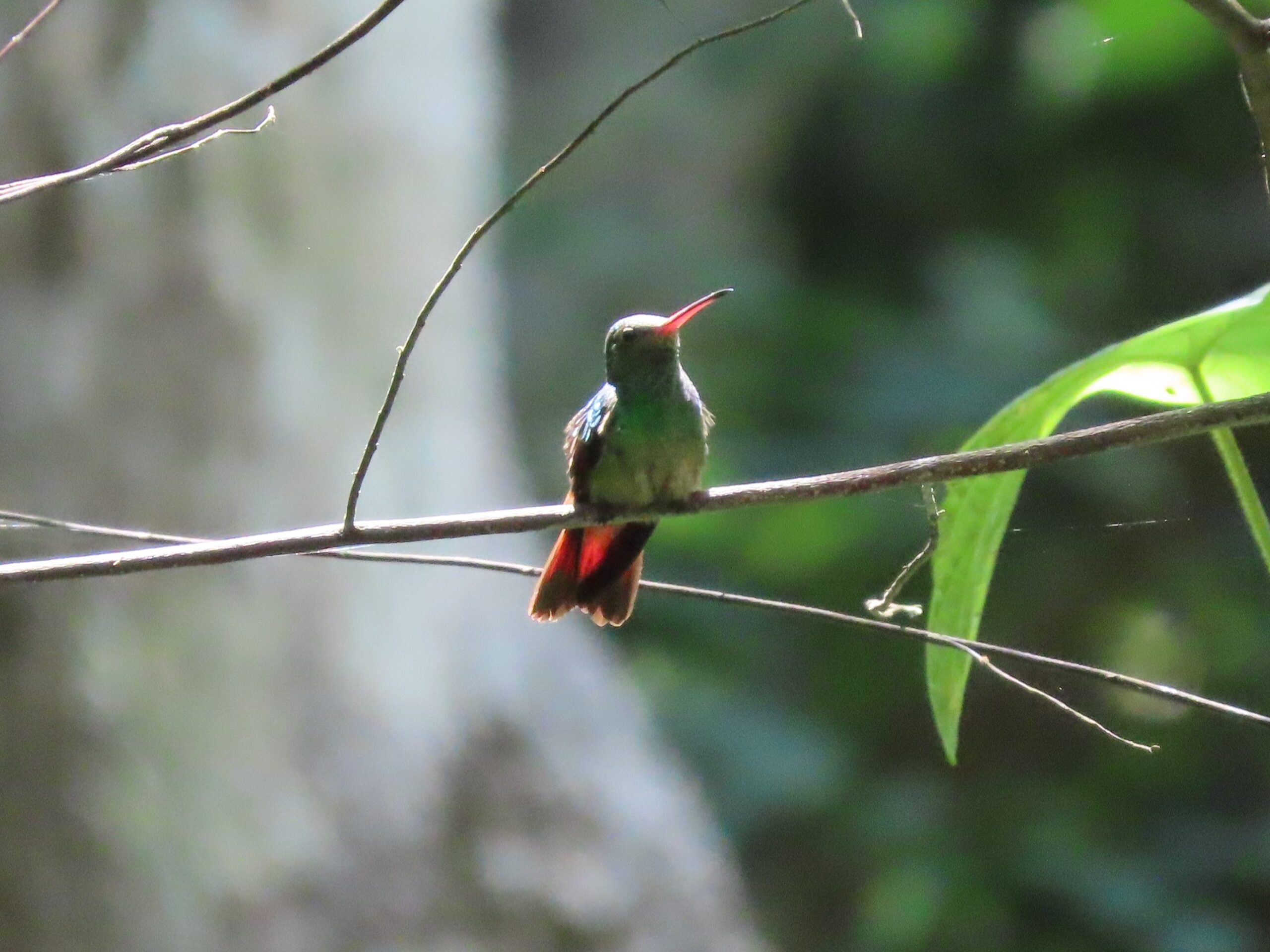
by Joan Baker
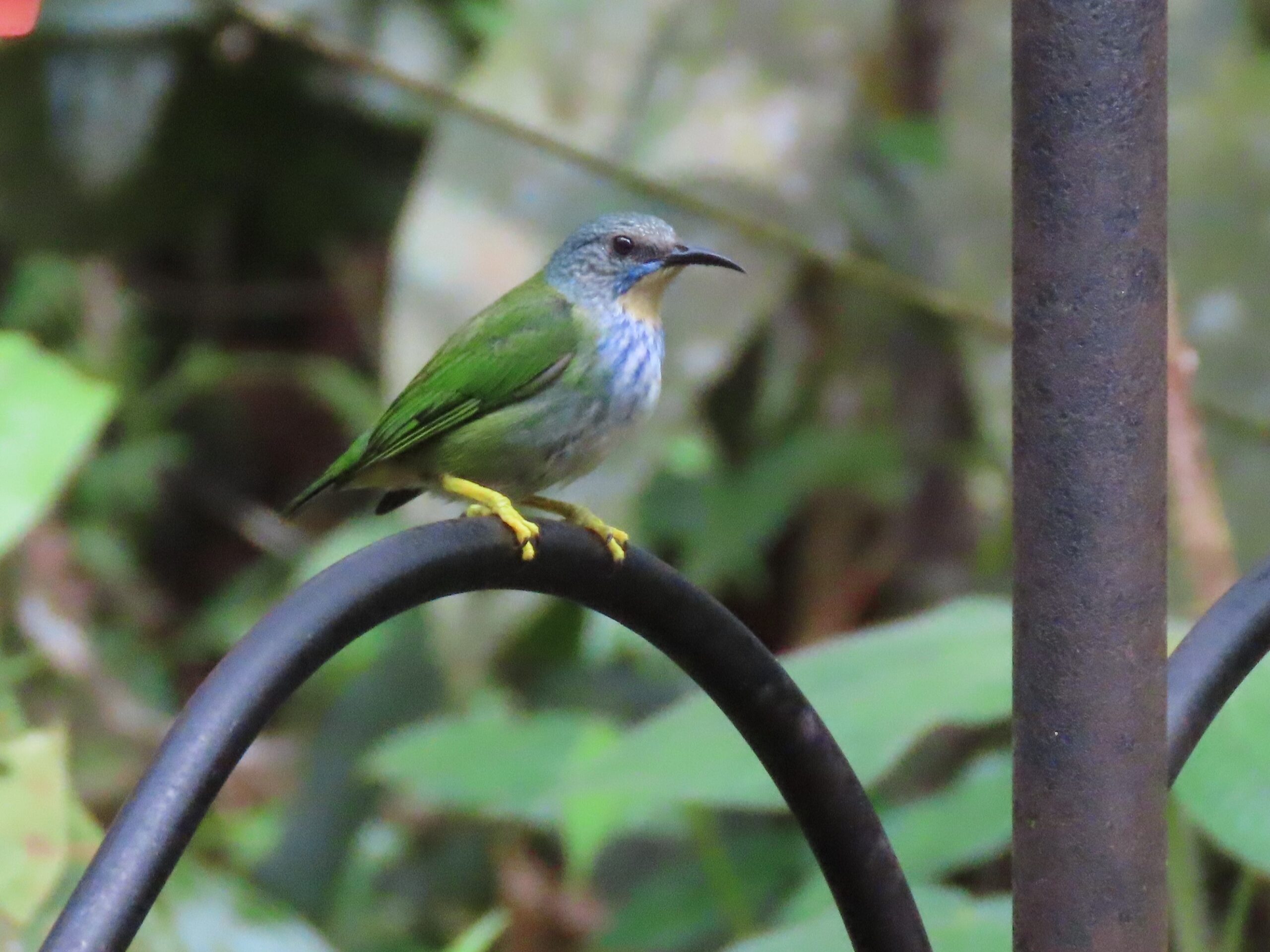
by Joan Baker
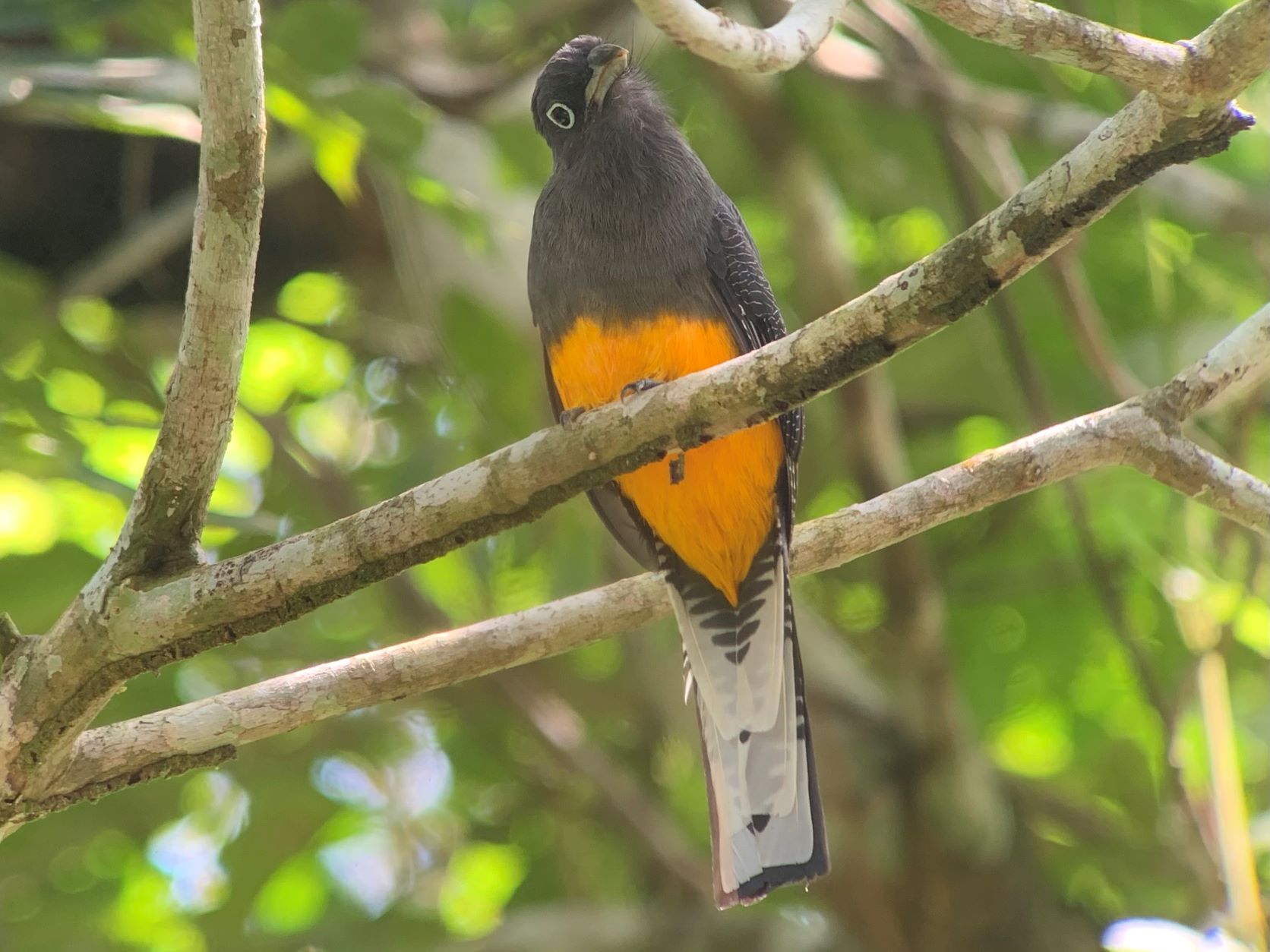
by Aaron Steed
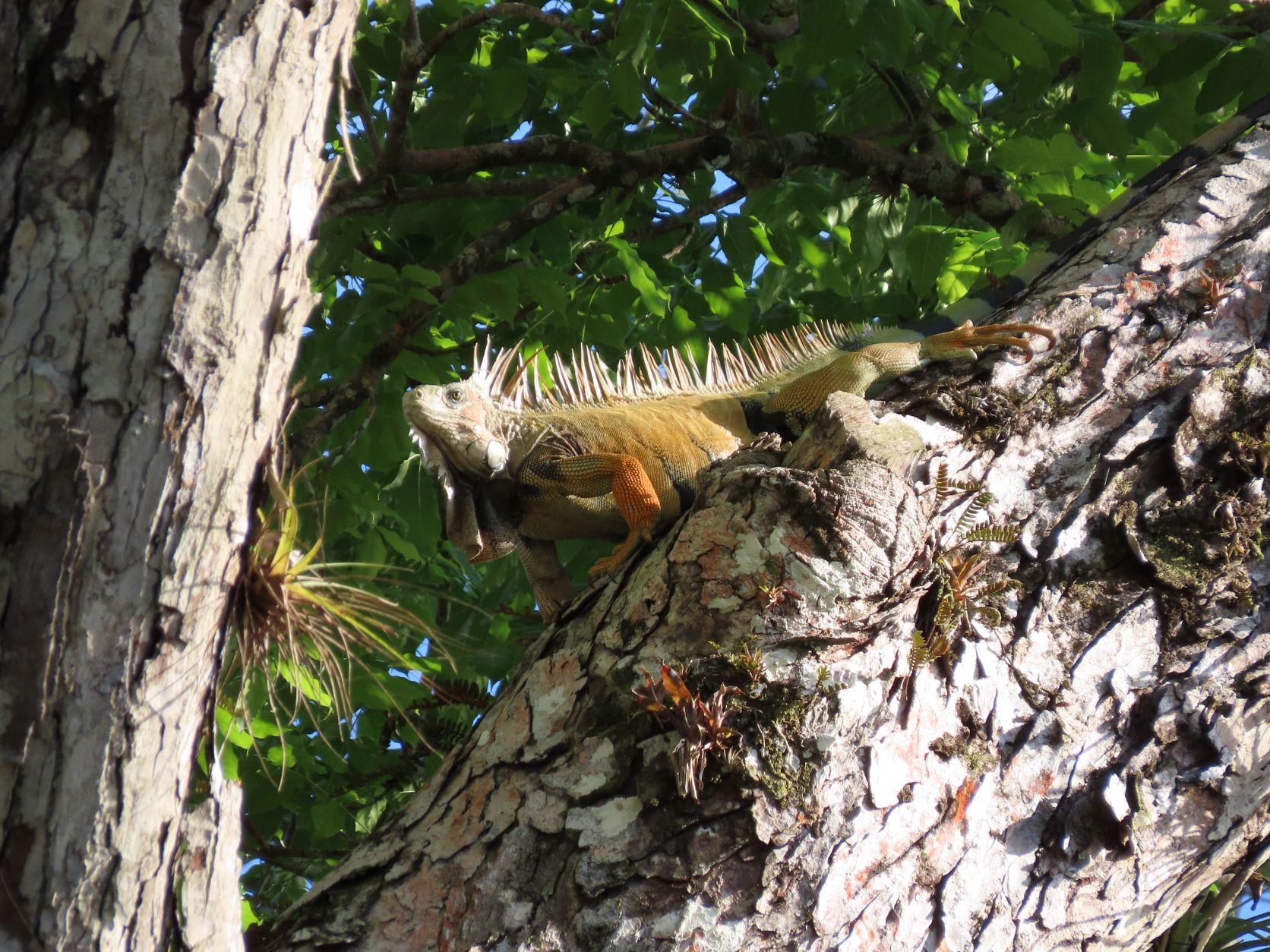
by Joan Baker

by Joan Baker
